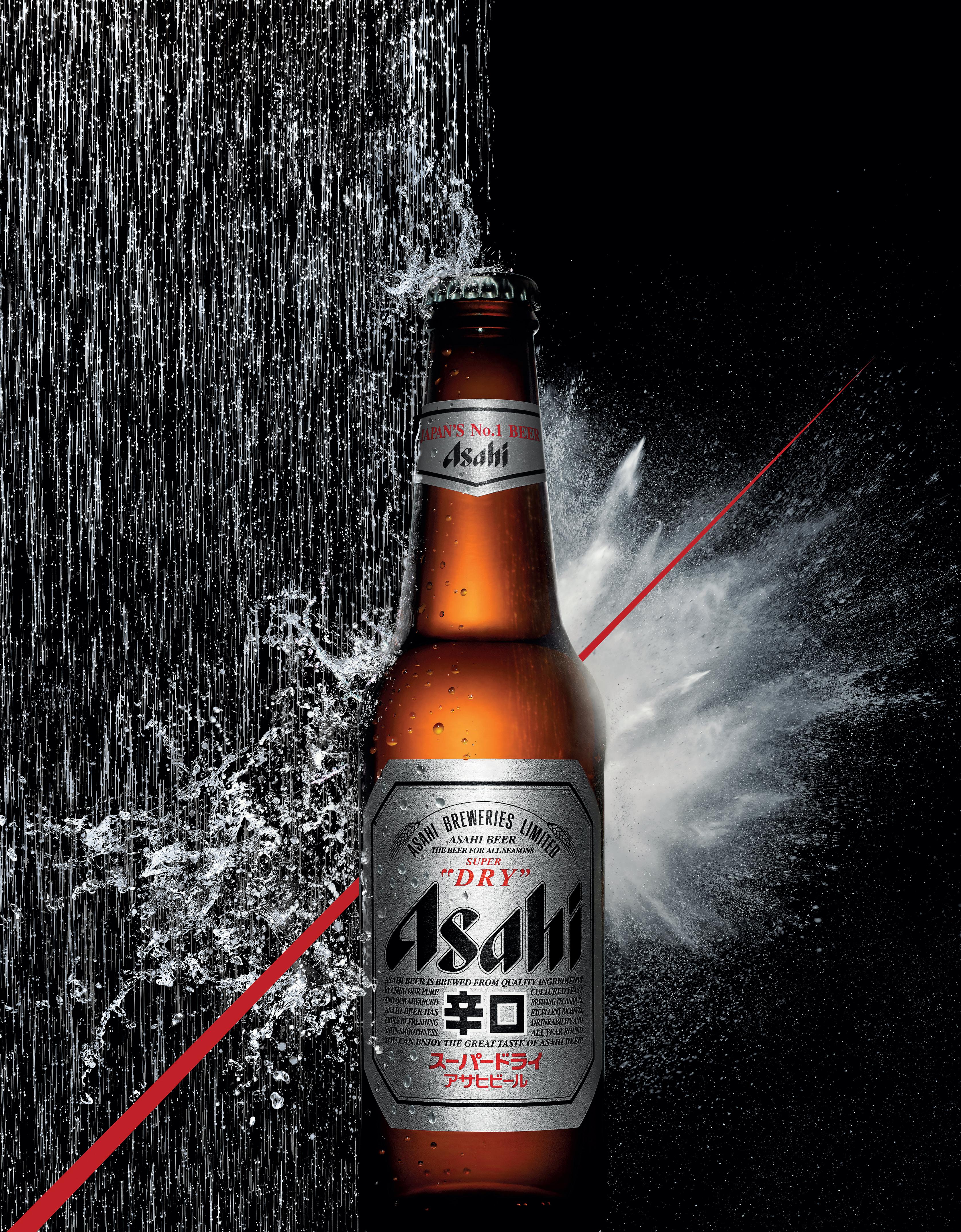TRIALS AND TRIBULATIONS
A BALANCE SHEET OF THE FIRST YEAR OF THE BIDEN ADMINISTRATION






















SEE ANALYSIS ON page 08



Japan

“Hungary and Japan display a close affinity for one another.” That is according to the Ambassador of Japan to Hungary, Masato Otaka. In addition to describing the various aspects of bilateral and multilateral cooperation the two countries have based on trust and friendship, he also outlines in an extensive interview with Diplomacy&Trade the many things Japan and Hungary have in common as well as what the Japanese people particularly like about Hungary, not forgetting his personal favorites.
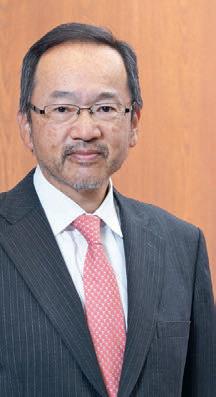
see compilation on pages 10-24

Tourism Day 2022
On March 3 this year, on the evening of the opening day of the traditional annual travel exhibition in Budapest, the tourism industry will celebrate with an exclusive party. The founder and chief organizer of this T-DAY event, Károly Bosznai, the Head of Communications, Krisztina Henyecz and the Sales and Marketing Director of the Budapest Marriott Hotel, János Parti tell Diplomacy&Trade about the details. see article on page 25
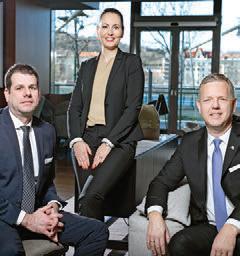
2022/II HUF 1710 EUR 6 FOCUS country

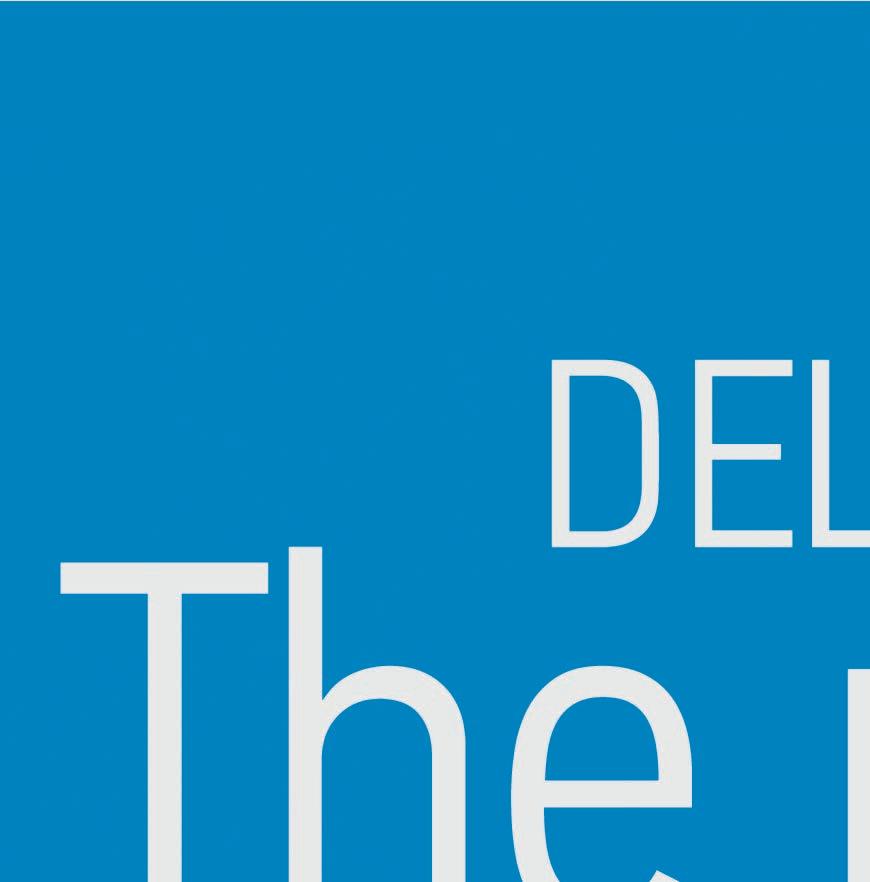

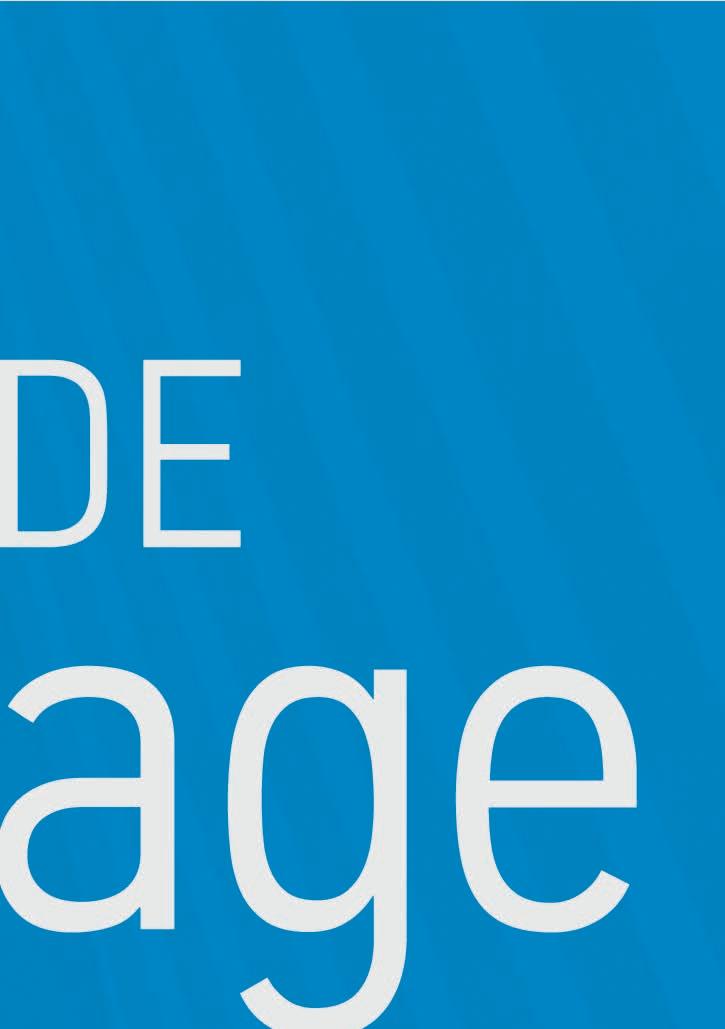






























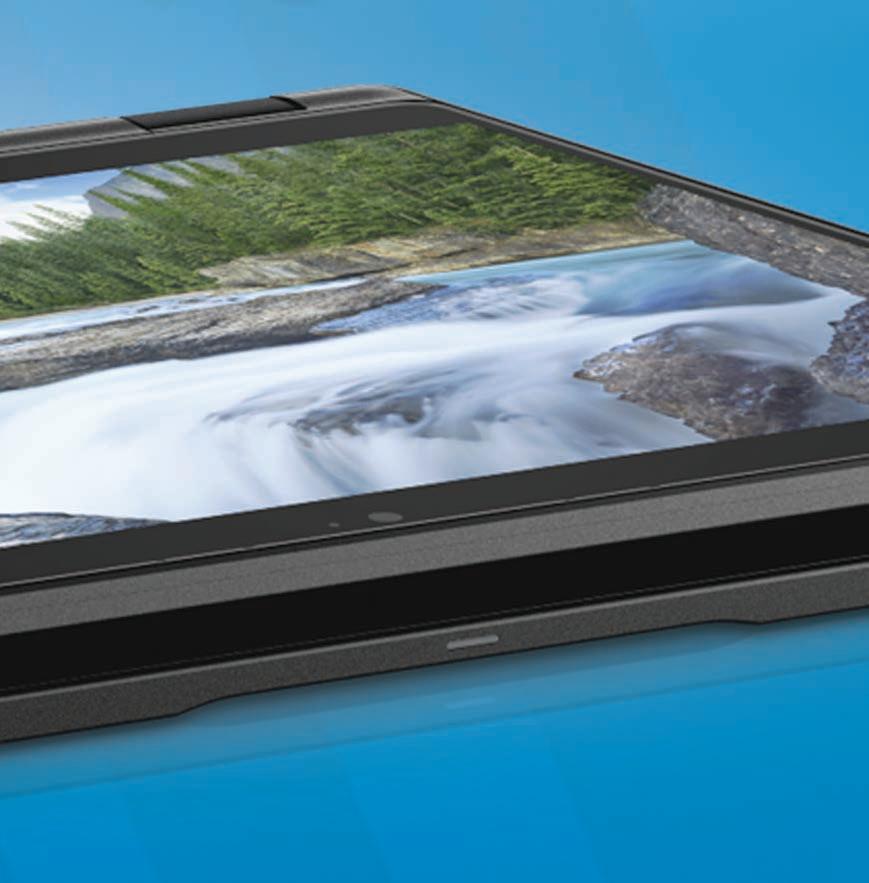





letter from the publisher
“Outlandish promises made during presidential campaigns are not new; sensible people do not, and should not, take them at face value,” says our political analyst when evaluating the first year in office by U.S. President Joe Biden. The conclusion is that his presidency produced mixed results at best but some of the issues are too early judge. He has not committed major mistakes yet, but his first year in office is not an unqualified success story either.
The country in focus this month is Japan highlighting the ‘Land of the Rising Sun’ celebrating the Emperor’s birthday as a national day in February. Japan is still one of the most important investor countries in Hungary. There are about 180 Japanese companies – many of them featured in the compilation –employing over 30,000 people in this country. The Japanese ambassador to Hungary, Masato Otaka talks, in a comprehensive interview, about the “close affinity” between Japan and Hungary that does not only include active Japanese participation in the business community in Hungary but also cultural matters like exchange programs.
This March, the Hungexpo exhibition and fair site in Budapest hosts the traditional travel fair very much awaited by the actors of the tourism industry hoping to see the full recovery of the sector after the pandemic. Since 2010, its main accompanying event has been T-DAY, an informal event for tourism professionals who now eagerly await to meet face to face again.
This month, WittyLeaks is authored by the Swiss ambassador who talks about in-depth exchanges and new stakeholders in bilateral relations. He is glad to cooperate with his compatriots who are former refugees of 1956 who went to Switzerland as young children with their parents, became double nationals and enjoyed coming back to Hungary as pensioners.

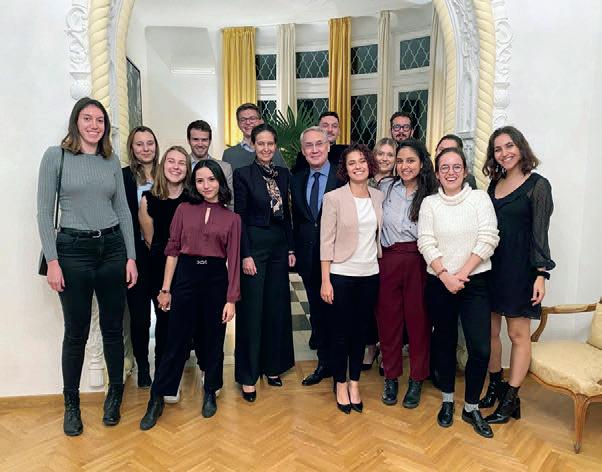
As you can find out on our wine page, the Tokaj Guide, presenting the most famous Hungarian wine region, has been recognized at the world’s largest competition for food and drink culture publications, the Gourmand International Awards, with the prestigious title ‘Best European Wine Book’.
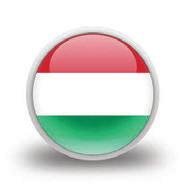
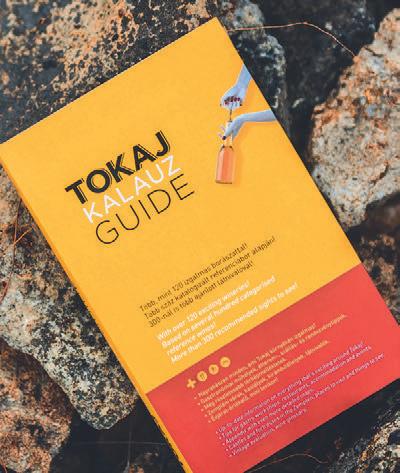
As we look ahead, signs of a receding pandemic brings hope while many problems persist on the economic front. Inflation accompanied, or even caused, by supply chain issues will likely be with us for some time. However, the most unnerving issue is the threat of war on our bordering state. Let’s all continue to hope for a diplomatic solution!
Peter Freed PUBLISHER

cont en ts
PUBLISHER: Peter Freed
EDITOR: Sándor Laczkó
PHOTO EDITOR: Dávid Harangozó

SALES & MARKETING DIRECTOR: Tamás Varga ADMINISTRATION: Éva Madarász
CONTRIBUTORS: Sándor Laczkó, Tamás Magyarics, Jean-François Paroz
PHOTO CONTRIBUTORS: Official White House Photo by Adam Schultz (cover), Bartók Tavasz, depositphotos.com, kunsagimalom.hu, facebook.com/HunEnt, Budapest Airport/Róbert Baranyi, Official White House Photo by Adam Schultz, Swiss Embassy, HIPA, Gábor Fényes, Bridgestone, Dreher, Máté Czabán, Academia Humana Foundation, Kadowaka Corporation, “Awake” Film Partners, Tokaj Guide, Live Nation, Pedro Greig, Gradvolt Endre/Endizajn Pictures, MTI Photos: Noémi Bruzák, Lajos Soós, Szilárd Koszticsák
2022/ II DIPLOMACY & TRADE| www.dteurope.com 4 Copyright 2004-2022 DUAX Kft., all rights reserved | ISSN 1589-8075 This magazine is produced by DUAX Kft. The opinions published in the magazine do not necessarily reflect the opinions of DUAX Kft. photo by TOKAJ GUIDE, BARTÓK TAVASZ, SWISS EMBASSY, DEPOSITPHOTOS.COM NOÉMI BRUZÁK/MTI, DÁVID HARANGOZÓ, DEPOSITPHOTOS.COM, LAJOS SOÓS/MTI, SZILÁRD KOSZTICSÁK/MTI We welcome inquires for advertising in this issue. PLEASE CALL TAMÁS VARGA FOR FURTHER INFORMATION +36 209 350 250 - tvarga@budapestweek.com AND DON’T FORGET monthly in print - daily on the web www.dteurope.com COPIES ARE AVAILABLE AT SELECTED RELAY AND INMEDIO OUTLETS IN MAJOR HUNGARIAN CITIES. NEWSSTAND PRICE: HUF 1,710 or EUR 6 - Subscriptions are available for an annual fee of EUR 72 in Hungary, or EUR 90 to all other destinations. SEND REQUESTS AND INQUIRIES TO DUAX KFT. H-1034 Budapest, Bécsi út 60. TELEPHONE [+36-70] 320-3051 | FAX [+36-1] 350-5660 E-MAIL editor@dteurope.com | ADVERTISING tvarga@budapestweek.com 05 ON THE RECORD 06-07 COMPANY BRIEFS 08 ANALYSIS The first year of President Biden 09 WITTYLEAKS by the Ambassador of Switzerland 10-24 JAPANESE FOCUS Interview with Japanese Ambassador Masato Otaka; HIPA; Suzuki; JETRO; Bridgestone; Takenaka; Lexus; Dreher; Chiyo Wagner; Japanese Filmfest 25 TOURISM Tourism Day 2022 26 WINE Tokaj Guide receives international recognition 27 WHAT’S ON Concerts, festivals, events and exhibitions in and out of Budapest
page 27
Event guide to the Hungarian capital
page 09
Honoring the contributors to Swiss-Hungarian relations
HUNGARIAN FOCUS – COMING SOON Diplomacy&Trade will publish a Hungarian Focus in its upcoming issue in connection with the national holiday on March 15 (that commemorates the 1848 Hungarian revolution). In this edition, we will feature the most successful traditional brands and new Hungarian-owned businesses that have achieved great success in the domestic and international markets in the past year.
Tokaj Guide honored as ‘Best European Wine Book’ page 26
NEW
YEAR DIPLOMATIC
RECEPTION IN BUDAPEST
Relations between countries and dialog between nations cannot be based on lies or denial of the truth. That is according to Hungarian President János Áder, who received members of the diplomatic corps at the Palace of Arts (Müpa) Budapest early January.
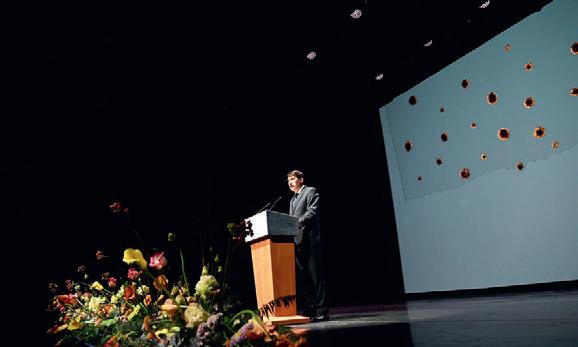
At the opening ceremony of the traditional diplomatic event, the head of state said that in the past ten years, he represented the values that he considers important as a Hungarian, as a man who cares for future generations, as a father of a family and now also as a grandparent – should they concern the confession of the past, the debates of the present or responsibility for the future, he added. In his speech, János Áder thanked diplomats and the countries they represent for being his partners in countless places and ways, such as in accepting, speaking and representing the truth.
At the end of his speech, he quoted the words of Robert Schuman, one of the founders of European integration and former French Foreign Minister: "World peace cannot be safeguarded without the making of creative efforts proportionate to the dangers which threaten it."
HUNGARIAN PARLIAMENTARY ELECTIONS SET FOR APRIL 3
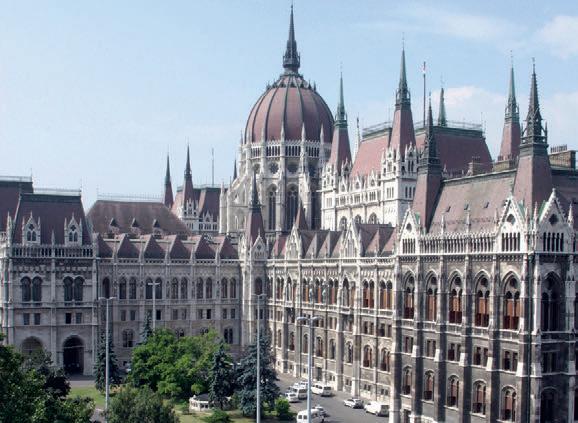
on the record
GOVERNMENT PUTS A CAP ON THE PRICE OF BASIC FOOD ITEMS
The Hungarian government has decided to freeze the prices of seven products – granulated sugar, wheat flour, sunflower oil, pork legs, chicken breast, chicken rump back and 2.8% cow's milk – from February 1 at the same level as they were on October 15 last year.

According to PM Viktor Orbán, the government would protect families with this measure but economists have calculated that the price freeze would have a negligible effect on family budgets.
UPCOMING NATIONAL DAYS
February
Zealand National Day
15Serbia National Day
16Lithuania National Day
23Japan National Day
24Estonia National Day
25Kuwait National Day
28Egypt Independence Day
March 1Bosnia&Hercegovina National Day
3Bulgaria National Day
6Ghana Independence Day
15Hungary National Day
17Ireland Independence Day
20Tunisia Independence Day
21Namibia Independence Day
25Greece National Day
President János Áder called the parliamentary elections for April 3, 2022, which is the earliest possible date for the election to be held, according to the law. The 7.8 million or so voters residing in Hungary must receive notification of their inclusion in the electoral roll by February 11.
The official campaign starts on the 50th day before the election, i.e. February 12, which means that the funds that can be used for this purpose are allowed to be spent during this period.
In a single-round election of the 199 members of parliament, 106 of them will be voted in from individual constituencies with the rest coming from party lists. In single-member constituencies, the law requires that candidates collect at least five hundred recommendations from voters living in the constituency and present them to the constituency electoral commission until February 25.
A party that has nominated an independent candidate in at least 71 single-member constituencies in at least fourteen counties and the capital may put forward a national list. National minority self-governments may also set up a list of their own.
The Prime Minister was of the view that his government “managed to curb the rise in petrol prices, we have introduced an interest rate freeze on mortgages, and we have a policy of reducing the cost of energy, so Hungarian families are getting energy at a fixed price, and this protects them.”
In his response, the candidate for prime minister by the united opposition, Péter Márki-Zay said that "Viktor Orbán's announcement is an admission that the Hungarian economy is in a tragic state. The miserable government that starts to deal with the price of goods in the last 12 weeks of its 12-year period of governing with a two-thirds majority must go. In the event of a change of government, VAT on basic foodstuffs would be capped at 5%.”
WARNING STRIKE BY HUNGARIAN TEACHERS
On January 31, more than 20,000 teachers took part in a nationwide teachers' strike, which is "a celebration of democracy in education," the president of the Teachers' Trade Union (PSZ), Zsuzsa Szabó said. At a joint press conference with the Democratic Trade Union of Teachers (PDSZ), she added that "we can be proud of the teachers because they have set an example". She also noted that "no matter how much energy the government put into preventing the strike, it was achieved.”
The PSZ president also stressed that there was a big problem in education, especially concerning low wages for teachers and other staff in public schools and if it continued like this, there would be no teachers to teach children, "our children would have no future, this society would have no tomorrow." She stated that a general walkout was planned for March 16 if no agreement could be reached with the government on their demands.
The opposition parties have expressed their sympathy, solidarity with – and support for – the demands of the teachers while the governing party Fidesz issued a statement calling the strike a "campaign action by the left."
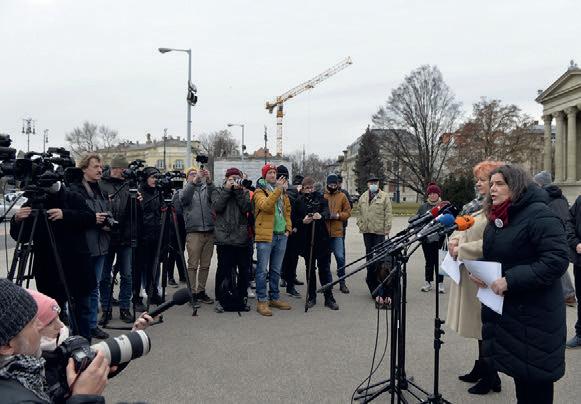
HOUSE OF HUNGARIAN MUSIC INAUGURATED
The House of Hungarian Music has been inaugurated in the City Park in Budapest, opening its doors to the public with concerts, an interactive exhibition, a creative music space and music education activities.
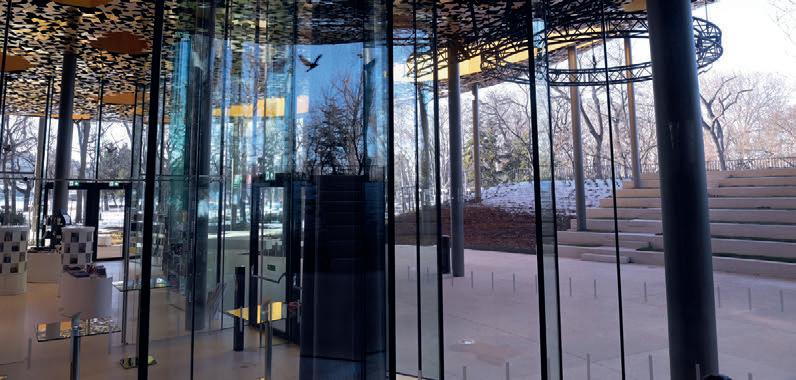
András Batta, the managing director of the institution was of the view that Japanese designer Su Fujimoto was inspired by nature and music, which is reflected in the design of the house. He added that children coming to the House of Hungarian Music will surely try out the musical playground built next to the house, but in fine weather, the outdoor stage will also be open to the public.
As for the concert program, he stressed that representatives of a wide variety of genres will be invited, so the Hungarian House of Music will not simply be a musical institution, but the heir to the former atmosphere of the City Park, a real "music pavilion" in the middle of the park.
On the apropos of the opening, environmentalists called attention to the loss of green space during the construction, while opposition figures reminded that the government interfered with local regulations to allow the construction of the building that is said to have cost Hungarian taxpayers HUF 30 billion, over 70% more than originally planned.
HUNGARIAN OLYMPIC CHAMPION GYMNAST PASSES AWAY
Olympic, world and European champion gymnast Szilveszter Csollány died at the age of 51 on January 24. The sportsman, infected with the new coronavirus, was hospitalized last November and after his condition deteriorated, he was put on a ventilator in early December.
Szilveszter Csollány was born on April 13, 1970 in Sopron, NW Hungary. His first senior success came at the 1990 European Championships in Lausanne, Switzerland where he won the bronze medal in the rings. Two years later, at the Barcelona Olympics, he finished ninth with the team and sixth in the individual all-around and seventh on the pommel horse. In the same year, he won silver in the rings at the World Championships in Paris and bronze at the European Championships in Budapest. His greatest successes were achieved in the rings. At the 1998 European Championships in St. Petersburg, Russia, he was finally able to stand on the top of the podium. Although he only won silver medals at the 1999 World and 2000 European Championships, he was the best at the Sydney Olympics, scoring 9.85 points and winning the gold medal with great confidence.

www.dteurope.com |DIPLOMACY & TRADE 2022/ II 5 photo by NOÉMI
BRUZÁK/MTI, DÁVID HARANGOZÓ, DEPOSITPHOTOS.COM, LAJOS SOÓS/MTI, SZILÁRD KOSZTICSÁK/MTI
6New
company briefs
NEW LOGISTICS CENTER FOR MARSO IN DUNAHARASZTI
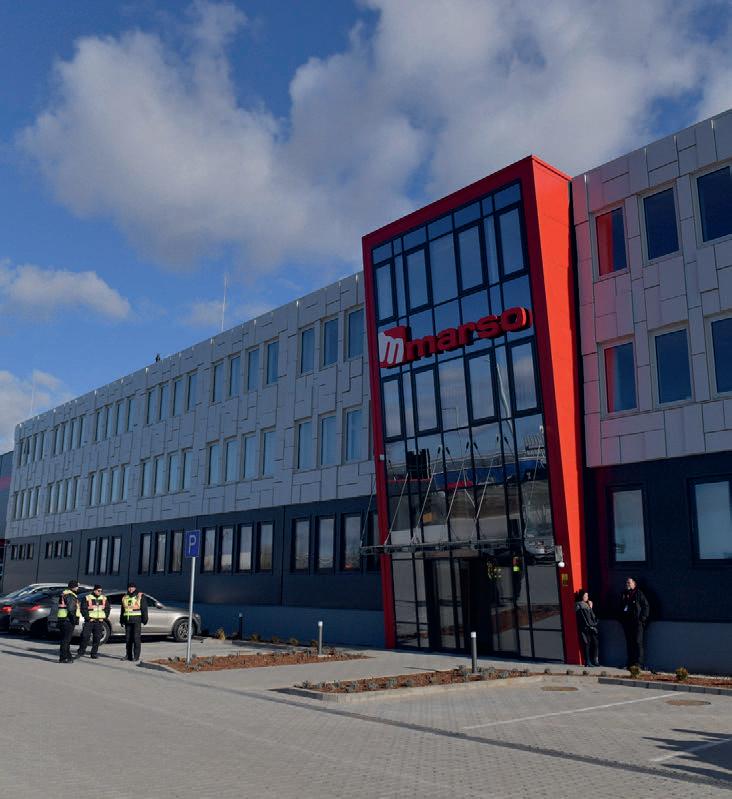
The largest investment ever made by tire distributor MARSO Ltd., the firm's logistics center in Dunaharaszti, just south of Budapest, was inaugurated at the end of January. MARSO Ltd, one of the largest tire distributors in Hungary and owner of the MARSOPONT service network, has taken advantage of the positive economic effects and processes of the past years. Especially in the field of passenger tire sales, there has been an outstanding development both in terms of volume and profitability. The significant and rapid growth has also been accompanied by a large increase in stocks. This has led to a daily requirement to increase storage capacity. The increase in storage needs in recent years has therefore presented the company with a major challenge. The increase in turnover, changes in customer needs, and the open-air storage of freight and agricultural tires, had already raised the need for warehouse expansion in the Budapest region many years ago.
MOL ACQUIRES FILLING STATIONS IN HUNGARY AND POLAND
Hungarian oil and gas enterprise MOL Group has signed an agreement to acquire Normbenz Hungary Ltd, which operates 79 service stations in Hungary under the Lukoil brand. MOL has also signed an agreement with Grupa Lotos SA and PKN Orlen to acquire 417 service stations in Poland.

The Lukoil agreement follows an acquisition in March 2021, when Slovnaft, the Slovak subsidiary of the MOL Group, acquired 100% of Normbenz Slovakia s.r.o. and 16 Lukoil-branded service stations in Slovakia.
"This acquisition is important for us for several reasons. On the one hand, it gives us the opportunity to optimize our operations in several countries, on the other hand, it further strengthens our regional positions and supports the implementation of our long-term corporate strategy, in which we are giving a prominent role to our Consumer Services business," Managing Director of MOL Group Consumer Services, Péter Ratatics said. With the Polish transaction, MOL enters the 10th country with its retail business, increasing its portfolio from 1,943 to 2,390 service stations and its retail network is now bordered by three seas: the Adriatic, the Baltic and the Black Sea. The company operates its service stations across the region under five brands, including the recently acquired 120 OMV Slovenija and the 95 new Lukoil stations in Slovakia and Hungary. These transactions are subject to regulatory approval.
Following the closing of the deal, MOL will become a dominant player in the Polish retail fuel market, with a number of service stations that exceeds the Hungarian market.
"As a major player in the market, we clearly see our role, responsibility and place in the tire market supply chain and accordingly, we are trying to improve our operations in areas where we see a need for improvement," Tibor Márkus, Commercial Director and one of the second generation owners of MARSO Ltd. summarized. A decision was made in 2019 that MARSO Ltd.'s warehousing and logistics situation needed to be resolved in the long term in order to ensure further stable operations and to maintain and expand its current market positions in the long term.
powerful equipment," the statement said. The increased output, improved hygiene requirements and a wider range of products are all designed to meet the needs of the population and consumers.
Kunsági Mill Ltd. in Törökszentmiklós, E Hungary, has improved its milling technology, and a HUF 600 million investment has increased the company's wheat storage capacity by 10,000 tons, the company said in a statement sent to the state news agency MTI this January.

According to the information, Kunsági Mill won a nonrefundable grant of almost HUF 200 million for the investment in the Economic Development and Innovation Operational Program (Ginop) tender (supported by European Union funding), and also received a refundable loan of almost HUF 200 million. The company contributed around HUF 200 million of its own resources to the investment.
Thanks to the investment, the existing storage capacity of 35,000 tons of wheat has been increased by 10,000 tons, and a modern, high-performance receiving and cleaning system has been built.
“The worn-out cleaning system and milling technology of the mill, which has stored around one and a half million tons of grain over the past 25 years, have been renewed and its capacity expanded. The production of rye, spelt and wholemeal wheat flour to meet modern nutritional needs has been modernized, and the sieve system has been replaced with modern, more
HCL TECHNOLOGIES ACQUIRES HUNGARIAN FIRM STARSCHEMA
HCL Technologies (HCL), a leading global technology company, signed a definitive agreement for the acquisition of Starschema, a leading provider of data engineering services, based in Budapest. The strategic acquisition will bolster HCL’s capability in digital engineering – driven by data engineering – and increase its presence in Central and Eastern Europe.
Starschema provides consulting, technology and managed services in data engineering to Global 2000 companies in the U.S. and Europe, according to a statement by HCL Technologies.

The acquisition combines Starschema’s high-value capabilities and data-focused expertise with HCL’s existing presence in industry segments undergoing data-driven transformation. In addition, HCL will strengthen its position in data engineering, which is an integral part of the company’s digital engineering capabilities and nextgeneration offerings.
The company, which employs 41 people, sells to several countries in the European Union, mainly Romania, but also has a market outside the European Union. 70% of its products are sold domestically, 30% are exported.
The company's profile was expanded in 2019 with the addition of a corn mill in nearby Karcag. The modern technology allows the production of both edible and industrial maize flours, grits, special extrusion products.
To meet modern nutritional needs, a separate mill is operated, producing high-fiber rye, spelt, wholemeal wheat and graham grits.
According to the public company data, the net sales revenue of Kunsági Mill Ltd. in 2020 was HUF 6.571 billion, and its profit after tax was HUF 312 million. In the previous year, 2019, it had a turnover of HUF 5.055 billion and a profit of HUF 218 million.
“Joining HCL will enable us to keep our strategic focus and expand our data engineering capacity to provide a greater breadth and depth of services to clients,” the founder and CEO of Starschema, Tamás Földi said.
“As part of HCL’s full spectrum of technology services, we will leverage our expertise in data engineering and emerging data technologies to solve companies’ data challenges, through building fast, scalable solutions that make people more effective and companies more profitable. This strategic move also represents exemplary career growth opportunities for our people," he added.
According to Vijay Guntur, President, Engineering and R&D Services at HCL Technologies, “Starschema will strengthen our data engineering capabilities, providing us with the ability to leverage its solutions and talent in Central and Eastern Europe. Starschema’s capabilities will further scale HCL’s data engineering competencies at our integrated delivery centers across the world. Engineering talent will continue to remain in high demand, and Starschema offers a specialized talent pool in a strategic growth area for HCL. Following the acquisition, HCL will be able to offer data engineering consulting and near-shore access to digital engineering services to a wide base of clients.”
The transaction is subject to regulatory clearance from the Hungarian Ministry of Innovation and Technology and is expected to close in March 2022.
2022/ II DIPLOMACY & TRADE| www.dteurope.com 6
photo by DEPOSITPHOTOS.COM, SZILÁRD KOSZTICSÁK/MTI, KUNSAGIMALOM.HU
HUF 600 MILLION INVESTMENT IN TÖRÖKSZENTMIKLÓS
company briefs

BUDAPEST AIRPORT ON COURSE TOWARDS ZERO EMISSIONS



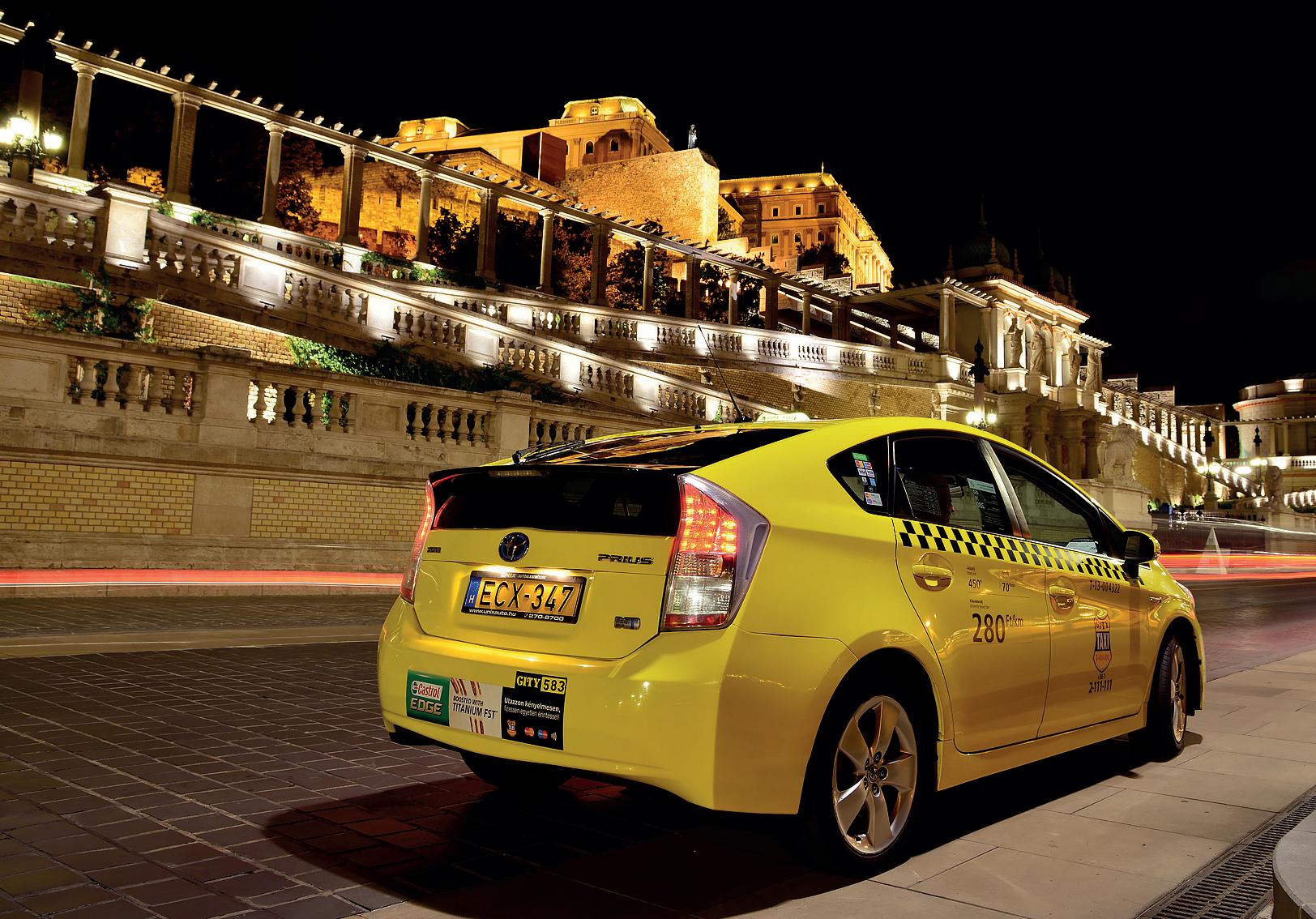
In 2021, Budapest Airport once again took huge steps to maintain its carbon neutral operations and achieve its sustainability goals. Last year, the company further reduced its direct carbon dioxide emissions, which are now half the level of ten years ago, while emissions per passenger were only one third of 2011 levels, the operator of the Hungarian capital's Ferenc Liszt International Airport said in a statement.
Lidl Hungary's fourth and largest 62,000m² logistics center was inaugurated in Ecser, Pest County at the end of January. The company received a HUF 1.2 billion non-refundable investment promotion grant from the government for the HUF 36 billion investment that is to create more than 400 new jobs in the region. It was in the summer of 2020 that Lidl Hungary announced the start of the large-scale investment, which is now been completed and the first deliveries of goods made on January 28. Beforehand, the company supplied the country's 190 Lidl stores, and thus Hungarian households throughout Hungary, from three logistics centers: in Székesfehérvár, Szigetszentmiklós and Hejőkürt. From now on, the new warehouse in Ecser will be responsible for serving more than 60
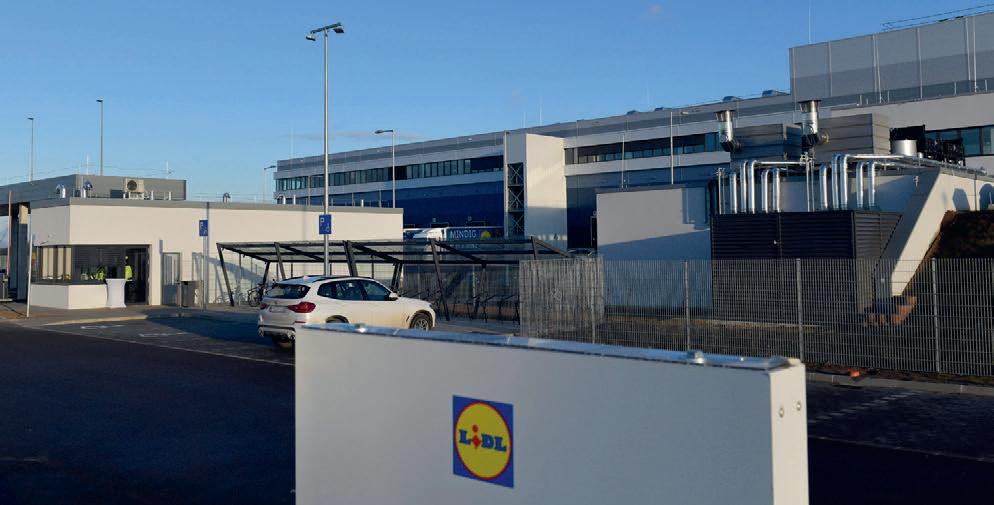
stores in Budapest and the surrounding area. The building has a floor area of 62,000 square meters, equivalent to the size of nine soccer pitches – of which more than 21,000 square meters, or three football pitch-sized, refrigerated areas, were built. Its highest point is at 21 meters, equivalent to seven stories. As an indication of the new warehouse's turnover, it will handle 200,000 pallets in a month and can accommodate up to 5,000 trucks.
According to the company, the dynamic development has made the discount chain the 11th largest company in Hungary in terms of the number of employees. It provides competitive wages for more than 8,500 employees and has spent more than HUF 27 billion on wage improvements over the past four years.

As the airport operator is committed to sustainable growth and environmental protection, in 2019, it officially joined ACI’s ‘NetZero by 2050’ initiative, a commitment to achieve net zero carbon emissions from its operations by 2050 at the latest. However, Budapest Airport announced last October that with the help of its net emissions reductions scheme, it is working hard to reduce its net emissions to zero up to 15 years ahead of the current deadline of 2050, by 2035. With this commitment, Budapest Airport aims to become
EURONICS: SALES UP OVER 11% IN 2021




Retail sales at the technical goods chain Euronics in Hungary increased by more than 11% to HUF 71 billion last year compared to the previous year, the highest annual turnover in the history of the chain.




According to the Hungarian-owned company, sales through its webshop exceeded the 2020 performance by almost 20%, while the majority of sales came from the nationwide network of 64 specialty stores, which also showed double-digit growth compared to the previous year. There were no changes in the most popular products compared to the previous year. In terms of turnover, TVs over 32 inches (81 cm) were still the best-selling last year, followed by pre-fill washing machines and combi fridges with sub-fridge freezers.
In a company statement, Euronics' commercial managing director, Bálint Fazekas said that learning from the difficulties of the pandemic in 2020, they planned much longer ahead and
the first airport in the region to achieve net zero carbon emissions, setting an example for other European airport operators. In order to reduce the environmental impact of the airport the most effectively, Budapest Airport launched its Greenairport program in 2015. The aim of the 40 partners participating in the initiative is for the airport and the organizations operating there to work together and help each other reduce their carbon footprint and the general impact of their operations on the environment. The main aim of the program is to reduce the airport’s carbon footprint by reducing energy use, creating opportunities for renewable energy, developing electric mobility, reducing water consumption, phasing out singleuse plastics, and encouraging selective waste collection and waste reduction at the airport.
increased their purchases when the opportunity arose. The company also added new product categories to its range. The garden and DIY range, launched in 2020, became a driver of company growth in 2021, with category sales more than five times higher than the previous year, he said. Around 1,200 of the new e-bike products in the e-mobility category were sold in 2021. The drug and chemical category is cited as one of the new hit products, and there are also high hopes for the sports and toys categories, which were launched at the end of the year, according to the statement. The commercial director said that the aim is that when someone buys a household appliance, he or she can also buy the accessories and related products that go with it.


A waterfowl further processing unit will be added to the plant in Mélykút, Southern Hungary and efficiency boosting investments will be carried out by Hunent Víziszárnyas Feldolgozó ('Waterfowl Processing') Plc. in the value of HUF 6.5 billion, about a third of which is to be covered by Hungarian taxpayers through a government decision. As a result, capacity is set to go up significantly, and export sales are bound to fly high. The Hungarian food industry, which is of strategic importance, is going to be enriched by yet another technology intensive investment. Hunent Plc., a business in sole Hungarian ownership, is member of one of Hungary's top waterfowl producing and selling corporate groups, Bács-Tak Group, and it has 150 years of tradition. The company plans to execute its newly announced developments until
November 2023. Currently, 10-11 million joint ducks and around 300,000-400,000 geese per year are processed by Hunent Plc. Due to the capacity increase by the new waterfowl further processing plant unit, the yearly output of fried, cured and marinated products should go from 700 tons to over 1,200 tons; moreover, production volume of primarily produced products (that are packaged raw, or sold cooled or frozen) should soar by 10%. Besides, new automation boosting equipment will give further impetus to productivity.


Up to 75% of the total production volume is already delivered for export which ratio is expected to grow by 5-10% thanks to the investment. Thus, it is planned that ever more waterfowl would find its way to foreign markets, mainly onto the shelves of German and English stores.

www.dteurope.com |DIPLOMACY & TRADE 2022/ II 7 photo by SZILÁRD KOSZTICSÁK/MTI, FACEBOOK.COM/HUNENT, BUDAPEST AIRPORT/RÓBERT BARANYI, DEPOSITPHOTOS.COM
C M Y CM MY CY CMY K Diplomacy-n-Trade.ai 1 2017. 02. 27. 11:22:30
HUNENT PLC. POULTRY EXPORTS TO FLY HIGH
LIDL HUNGARY INAUGURATES NEW LOGISTICS CENTER
TRIALS AND TRIBULATIONS
A BALANCE SHEET OF THE FIRST YEAR OF THE BIDEN ADMINISTRATION
BY TAMÁS MAGYARICS
Joseph R. Biden took office as the 46th President of the United States on January 20, 2021 – and as practically every single occupant of the White House, at least in the past few decades – promised radical changes from his immediate predecessor’s policies. In the case of Joe Biden, the most important promise was the unification of American society after the divisive four years of the Trump presidency. He also promised to handle the COVID-19 pandemic better than Trump did. He promised to reverse Trump’s immigration policies, including the construction of a wall along the U.S.-Mexican borders, as well as providing more humane treatment of illegals inside the U.S. He pledged himself to restore relations with U.S. allies, and to put values ahead of naked interests in international relations. He offered the vision of a greener America, and a more just distribution of wealth – at times, some people inside the Bidencamp even tried to liken the would-be Biden presidency to that of Franklin D. Roosevelt’s, and progressive on the left of the Democratic Party started to talk about a Green New Deal.

Too early to say?
Outlandish promises made during presidential campaigns are not new; sensible people do not, and should not, take them at face value. If a President is able to fulfill half of the promises made on the campaign trail, he is regarded as quite successful and honest with voters. Though it may be too early to draw a balance sheet of the Biden presidency, it very much looks that he is struggling to make good on his campaign
promises. His prospects for implementing the better part of his public program depend, to a large extent, on the outcome of the upcoming congressional elections in November 2022. If the Republicans gain back either of the Houses, they will likely be even more intransigent and uncooperative than they are at the moment. When they won majority on the Hill in 2010, the future Majority Leader of the Senate Mitch McConnell famously quipped that their sole purpose would be to make Barack Obama a one-term president. Given the bitterly polarized and hostile political climate in Washington, and in much of the country, today’s Republican leaders in Congress will most likely copy and paste this statement replacing Barack Obama’s name with that of Joe Biden.
Mixed results
First and foremost, President Biden has not been able to unite the nation; in fact, he has had to fight a two-front war at times. It is especially the progressives and the African-Americans who have become disillusioned with his presidency because of his failure to push through such bills as the Freedom Vote (John Lewis Act), which would introduce national standards for organizing elections, or the USD 1.75 trillion Build Back Better Act, which would expand Medicare, affordable housing, etc. The ’social infrastructure’ bill is vehemently opposed by the Republicans, and the potential filibuster in the Senate cannot be pushed aside because it has the support of a few Democratic senators. The economic performance, which is in most cases the primary concern o voters, is also a mixed bag. Millions of jobs have been created, but the U.S. is experiencing the highest inflation rate
in the past forty years, gas prices are sky-high (relatively speaking), and the efforts to lure back big corporations to the U.S. have produced mixed results at best. The handling of COVID-19 pandemic has been mostly successful, but here – as the old saying goes – success has many fathers: a number of governors also claim credit for the decreasing number of infection cases of the new coronavirus and its mutations.
Keeping distance from the excesses
The kind of Kulturkampf that has defined a number social and cultural issues in recent years has not abated. President Biden has kept a distance from the excesses of the identity politics, the critical race theory, the rather unusual reinterpretations of American history; he has been a middle-of-the road politician in his whole life, someone, who was able to ’cross the aisle’ and work together with politicians of different persuasions than his own. President Biden seems to be acting as Senator Biden did for decades, that is, following the current mainstream within his party. As President, he should lead his party and the nation. Of course, it is easier said than done given the hostile opposition, and the lack of enthusiasm in some quarters in his own party.
Only following international events
Despite the fact that Joe Biden spent decades as a member, and occasionally chair, of the Senate Foreign Relations Committee, then eight years as Vice President dealing primarily with foreign and security issues, he is prone to follow events in the international arena as well. China, Russia, and Iran seem to be shaping international events for better or worse (rather for worse), and
President Biden has mainly restricted himself to responding to the challenges they pose. His only initiative, the Summit for Democracy was a flop: it was poorly designed with obscure goals and has been forgotten by everyone for all intents and purposes. His intention to restore trust with allies has yet to materialize: with the chaotic withdrawal from Afghanistan with little consultation with the allies and the sudden announcement of AUKUS. One may say that these were not issues of strategic importance; the real test for leadership is how he will handle the Ukraine crisis, how he will keep NATO together – and what his response will be to China’s increasing assertiveness in the IndoPacific region, with special reference to Taiwan.
No major mistakes
Overall, President Biden has not committed major mistakes yet, but his first year in office is not an unqualified success story either. There are examples in the history of the U.S. where a President, after in inauspicious first year or so, became formidable, transformational leaders of the nation. Harry S. Truman comes into mind, but there also cases when a presidency that started on low key, remained there for the rest of the tenure of the office holder. Joseph R. Biden’s presidency can go either way in the next couple of years. Naturally, the domestic and foreign political environment will be decisive. As Harold Macmillan put it memorably regarding the greatest challenge for a statesman: ”The events, my dear boy, the events.” Looking into the crystal ball, there will not be scarcity of ”events” for President Biden at home and abroad alike.
Tamás Magyarics is a foreign policy analyst
2022/ I I DIPLOMACY & TRADE| www.dteurope.com analysis 8 photo
by OFFICIAL WHITE HOUSE PHOTO BY ADAM SCHULTZ
WITTY
LEAKS
witty leaks
IN THIS SERIES, DIPLOMATS SHARE PERSONAL ACCOUNTS OF THEIR EXPERIENCES ON “EXCURSIONS” into Hungarian culture, art, gastronomy & scenery.
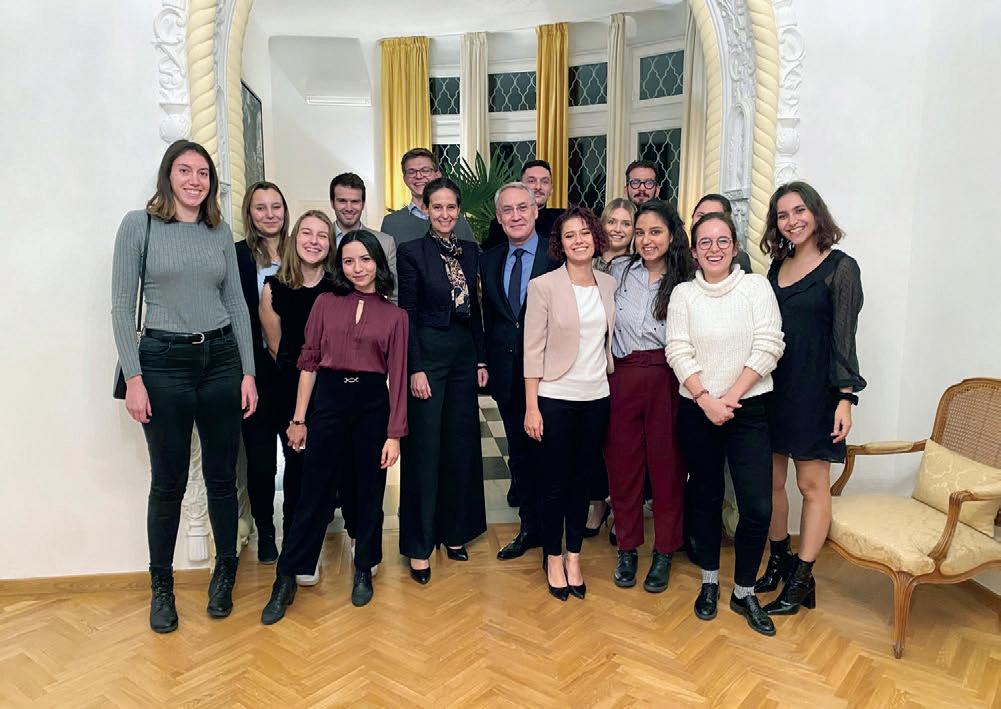
IN-DEPTHEXCHANGESAND NEWSTAKEHOLDERS
HONORING THE CONTRIBUTION OF BUSINESS AND CIVIL SOCIETY TO BILATERAL RELATIONS
BY THE SWISS AMBASSADOR, JEAN-FRANÇOIS PAROZ
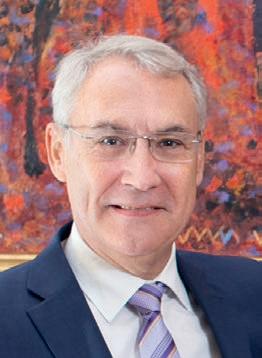
As we have entered a new year, I look back at 2021 with very mixed feelings. As in 2020, the COVID pandemic continued to affect our lives negatively, sometimes even with tragic effects. One year ago, my father passed away in Switzerland –not from COVID, but with COVID – and we were not able to gather with all family members and friends to pay tribute to his memory. In foreign policy, the relations of Switzerland with the European Union have suffered a series of setback in 2021. Following the decision of the Swiss Federal Council in May not to pursue the negotiation of an institutional agreement with the EU, the EU Commission decided to adopt several measures aiming at punishing Switzerland, a policy which is both sad and ineffective between friends and mutually beneficial partners. Nonetheless, my country intends to contribute to the further reduction of economic and social disparities in Europe. I am pleased that the technical discussions between Swiss and Hungarian administrations on the bilateral program under the second Swiss contribution are the most advanced we have with our partners in Central and Eastern Europe.
Swiss-Hungarian ties during the pandemic
The bilateral relations between Switzerland and Hungary, both in terms of diplomacy and trade,
developed very positively in 2021. After more than a decade without any such high-level visits, two Federal Councilors visited Budapest. Federal Councilor Ueli Maurer met with Hungarian Finance Minister Mihály Varga in June and Federal Councilor Ignazio Cassis was invited by Foreign Minister Péter Szijjártó as honorary guest to the Hungarian Ambassadors Conference, which took place by the end of August. Numerous companies have expanded their sites and made new investments, such as Metoxit, Nestlé, Sensirion, Sika, Swiss Krono and Roche. Swiss and Hungarian governments are pleased by these developments. Members of the Hungarian government made themselves very available to meet with our business community. By the end of 2021, and within a time spawn of merely four and a half months, representatives of our companies had the opportunity to meet with both the Minister of Foreign Affairs of Switzerland and the Minister of Foreign Affairs and Trade of Hungary for in-depth exchanges on their experiences in the country. This is a rare and precious opportunity, which was accordingly appreciated.
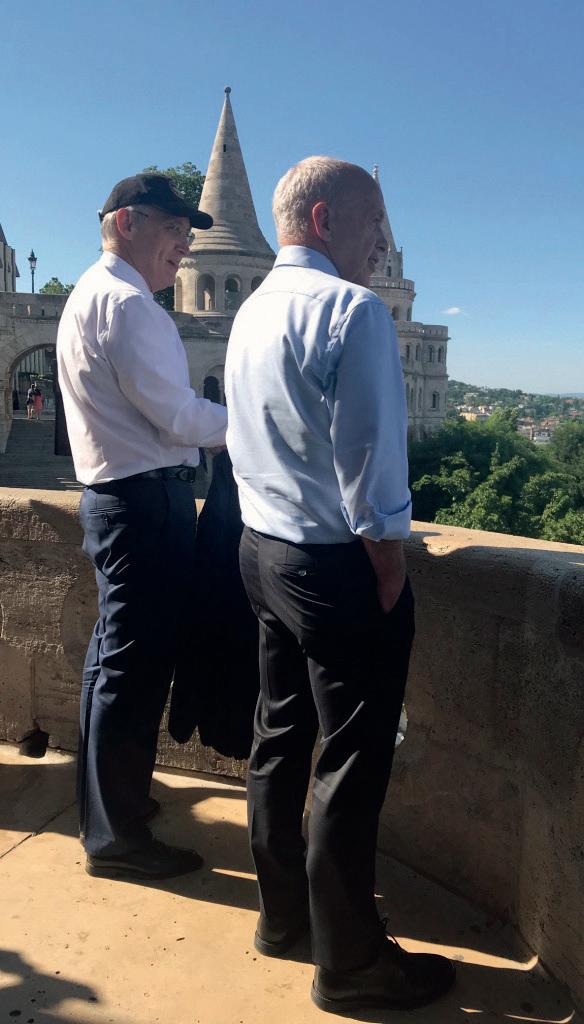
For freedom and equality of rights in Switzerland
There were some positive surprises too. Last summer, I have spent quite a lot of time providing objective information on Hungarian Law No.
T/16365 on “Stricter action against pedophile offenders and amendments to certain laws in order to protect children” and on the debates it opened in Hungary and in the EU and partner countries. On September 26, when the Swiss citizens adopted the law on same-sex marriage with a majority of 64% of the population and the acceptance of the law by all Cantons, I was both surprised and proud. Back in 2007, registered partnership had been introduced in Switzerland, but same-sex marriage had not been considered acceptable by a majority of the population. 14 years later, the sometimes conservative Swiss people have chosen to take an extra step in the direction of freedom and equality of rights for all.
Working with the Swiss community
The Covid-19 pandemic has shown that we must always see ourselves as part of a society. We all share common risks and responsibilities and face the same constraints and challenges. With my team at the Swiss Embassy, we therefore strive to maintain direct contacts with the members of our community in Hungary. This is the main goal of our Facebook page (@SwissEmbassyBudapest), inaugurated in 2021. Thanks to progress in the fight against the pandemic, not least through vaccination campaigns, we were not affected as badly in 2021 as in 2020 by lockdowns or restrictions in social interaction. Last summer, the Swiss Association of Hungary (Schweizer Verein Ungarn) was able again to organize a celebration on the occasion of the Swiss national day and I enjoyed meeting my compatriots and representatives of the parliamentary friendship groups of Switzerland and Hungary. The members of Swiss clubs all over the world have Swiss German as their main communication language, but in the Swiss Association of Hungary, the communication language is Hungarian. Most members are former refugees of 1956 who went to Switzerland as young children with their parents, later contributed to the prosperity of my country, became double nationals and enjoyed coming back to Hungary as pensioners. They have become a special link between the two countries. Last fall, presenting in Budapest his book « le Ciel bleu au fonds du puits » about his exile in 1956 and his experience and career in Switzerland, Bálint-Géza Basilides underlined the special position of this community. Asked whether he felt more Swiss or more Hungarian, he answered: « I feel Swiss in Hungary and Hungarian in Switzerland ».
New stakeholders
As the people-to-people contacts between the two countries intensify, new stakeholders emerge and contribute to stronger bilateral relations. A Swiss circle has been established at Lake Balaton, composed of Swiss citizens who have settled in this beautiful region after the end of their professional career. They do not have Hungarian roots but do now become new Hungarian residents with Swiss roots. The Embassy has also strengthened the relations with the Swiss Semmelweis Students Association, which brings together young Swiss people who have chosen Hungary to conduct their medical studies. In 2022, it will be a priority for my Embassy and for me personally to strengthen further the contacts with my fellow citizens and with all actors of the bilateral relations not only in Budapest but also in other cities and in the countryside. It is the main objective of the project « Switzerland in your city » that we will realize in partnership with Swiss companies, Swiss communities and local authorities, institutions and other partners between 2022 and 2024.
www.dteurope.com |DIPLOMACY & TRADE 2022/ II 9
photo by SWISS EMBASSY
BY SÁNDOR LACZKÓ
Ambassador Otaka arrived to Hungary over a year ago to take up his current position in Budapest. “First and foremost, as an ambassador, my ultimate mission is to further develop bilateral relations between Japan and Hungary based on trust and friendship, which can only be achieved by continuous contact and dialogue with the people of Hungary. This is not exclusively reserved for government officials as diplomacy is shaped also by people of all ages in various areas including the private sector. I have promised myself to promote the understanding of Japan with passion by actively communicating information relating to our country including governances, policies, culture and values,” he tells Diplomacy&Trade. He adds that knowing Hungary through learning Hungarian history and official trips to the countryside is an essential aspect as well. He believes that each city and town has its own valuable history. “I have visited various places where Japanese companies are located, where Japanese students are pursuing their study, where Japanese artists are doing their activities, and where Hungarian people are actively engaged in learning Japanese language and culture. I am always amazed by their passion. I hope to learn more about Hungarian history and visit more places, and thus, deepen my knowledge and understanding on Hungary and the Hungarian people.”
Close affinity
Describing the bilateral relationship, the Ambassador mentioned earlier that “Hungary and Japan display a close affinity for one another.”
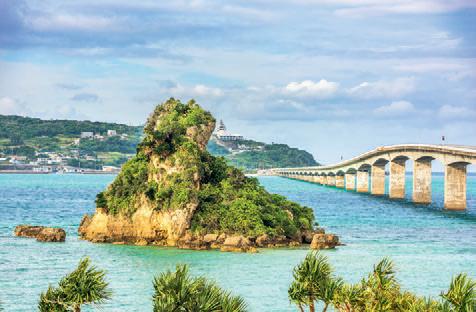
As for what that means, he explains that close affinity is displayed in many fields. Regarding business, similar level of labor quality in Hungary is well known in Japan. “Many Japanese companies say that Hungary and Japan share much in common in terms of diligence and the spirit of craftsmanship – and the companies know how important this is.”
He mentions that in terms of industry, Hungary has built a mature automobile industry similar to that of Japan. “Magyar Suzuki Corporation Ltd. was the earliest investor among foreign firms in Hungary. A number of Japaneseowned companies followed and started to build highly reliable supply chains for this industry. Currently, there are about 180 Japaneseowned companies operating in Hungary. The Japanese government was also actively involved in supporting Hungary, where such support was needed. Soon after the change of regime
INTERVIEW WITH THE AMBASSADOR OF JAPAN, MASATO OTAKA

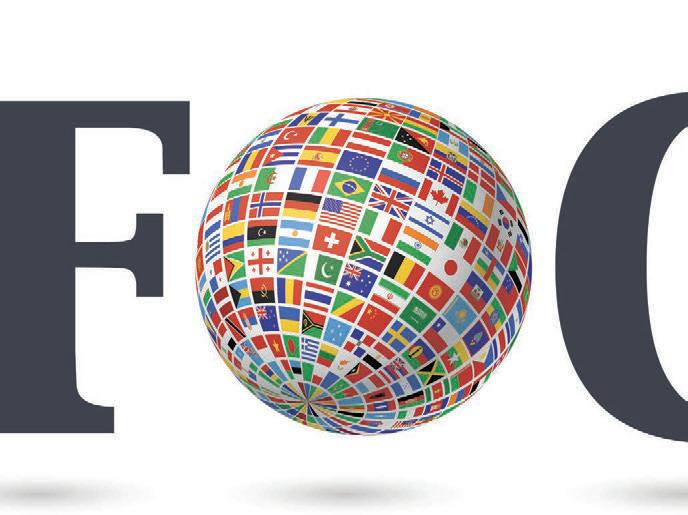
TRUST AND FRIENDSHIP THROUGH CONTACT AND DIALOG

in Hungary in 1989, Japan started to provide support to Hungary through official development assistance such as the construction of sewage and heating systems. At the same time, technical cooperation began. Japan has accepted Hungarian trainees, dispatched experts and provided equipment, mainly in the fields of Hungarian culture, production management, business management and environmental conservation. About half of the total assistance to Hungary was allocated to cultural institutions such as the State Opera House, the Liszt Academy of Music and the Hungarian National Museum, which received many assets of equipment and human resources development programs. Moreover, in 1991, the Japan Foundation office, which is Japan's only institution dedicated to carrying out comprehensive international cultural exchange programs, was established in Budapest, covering 13 countries in Central and Eastern Europe. Through the Japan Foundation, cultural exchange between the two countries has become drastically active. I am also delighted to have been able to witness the recent grand opening of the House of
Music, which was designed by Sou Fujimoto, a Japanese architect.”
Political relations
Ambassador Otaka sees an unwavering phenomenon in common between Hungary and Japan: “we both share the experience of making every effort to revitalize and re-develop the country after the war.” He highlights that communism in Hungary, which is often referred to as Goulash Communism, provided its people with relative freedom compared to other eastern
A PROFESSIONAL OF VAST EXPERIENCE

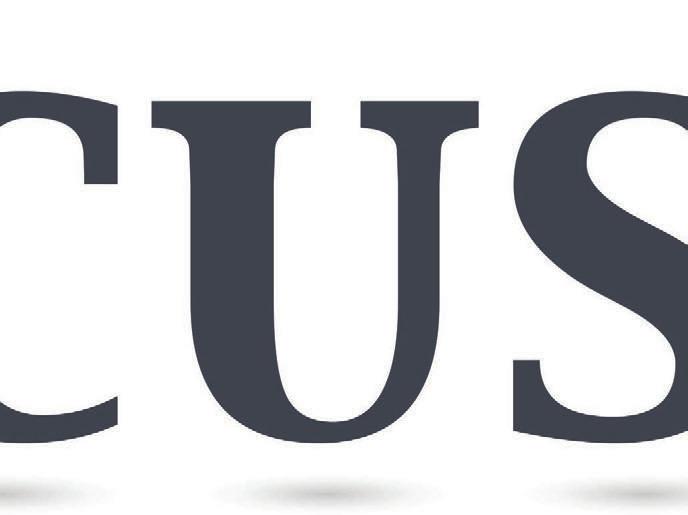
bloc countries. “Perhaps, this could explain how Hungarians were able to stay so strong to keep their heads up and were always looking ahead to the brighter future. They were looking at not only their neighboring regions but at the Eastern part of the world, including Japan. And we successfully turned the hardship of Hungary’s regime change into an opportunity of cooperation by providing Hungary with both spiritual and material support.” As he puts it, “starting from scratch” is one signature phrase to represent bilateral relationship between Japan
Masato Otaka joined the Ministry of Foreign Affairs (MOFA) in 1986. Before assuming his current post last year, he served in various capacities such as Counsel for International Legal Affairs (2005), Director of Southeast Economic Partnership Division (2005-2007), Director of Southwest Asia Division (2007-2009), Deputy Press Secretary/Deputy Director-General in charge of Press and Public Diplomacy (2016-2017) and Press Secretary/ Director-General for Press and Public Diplomacy (2019-2020).
His overseas posts included First Secretary in charge of the Security Council U.N. Mission (New York, 19982001), Economic Minister of the Embassy of Japan in Thailand (2009-2012), Minister for Public Affairs of Embassy of Japan in the U.S.A. (2012-2016). “I was honored to be appointed Ambassador Extraordinary and Plenipotentiary to Hungary in 2020,” he says.
2022/ II DIPLOMACY & TRADE| www.dteurope.com 10 photo by DÁVID HARANGOZÓ, DEPOSITPHOTOS.COM
and Hungary. Therefore, helping Hungary, which was undergoing turbulent years after the drastic regime transition, was only natural for Japan, he says. Investments and economic cooperation not only by the Japanese government but also by some Japanese private companies, such as Suzuki, were carried out in Hungary. “We believe that these have contributed significantly to the development of Hungary.
Today, as international cooperation becomes even closer, Japan attaches great importance not only to the stability of Asia but also to that of the European region. Beyond the concept of regions, we, as responsible international players, must keep seeking ways to contribute to global peace and stability. This is another idea that we can firmly agree on,” he states.

Multilateral cooperation
The Ambassador points out that Japan and Hungary are cooperating not only in bilateral formats but also in several multilateral frameworks. The Budapest Convention on Cybercrime, which was named after the city where the signing took place, is a good example. Japan is amongst the few participating countries from Asia to join this agreement. Coupled with accelerating evolution of technology, responding strictly and promptly to cross-border cybercrime has become even more imperative ever since the agreement entered into force in 2004. “Together, Japan and Hungary have been making strenuous efforts to convince the world of its importance,” he notes.
As the only country to have suffered atomic bombings, Japan has been leading the international discussion on disarmament and non-proliferation. Achieving a nuclear-free world, the realization of which the current Japanese premier Fumio Kishida has been particularly enthusiastic about, is another goal that both Hungary and Japan share.
Ambassador Otaka notes that in Afghanistan, for instance, Japan has been active in various forms and mentions the example of Dr. Tetsu Nakamura, a Japanese doctor who devoted his career to improving the lives of Afghans and lost his life there. Hungary has also been making every effort to maintain the stability of Afghanistan, and in this respect, we share the same goal of making the world a better place,” he adds.
Supporting a strong, united Europe
In a wider context, Ambassador Otaka notes that Japan and the EU, of which Hungary is also a member, are closely tied to take forward their close and comprehensive partnership, grounded in common interests and shared values of freedom. As cooperation with the EU is particularly important in terms of enhancing Japan’s presence and influence in the international community, Japan supports a strong united Europe.
“The year of 2019 was a milestone for our evercloser relationship: the Japan-EU Economic Partnership Agreement (EPA) entered into force. As we talk about it later, for instance, Japan is an enthusiastic importer of Hungarian products

japanese focus
including wine and food. Accordingly, these series of agreements definitely have had a positive impact on the presence of Hungarian products in Japan,” he notes.
In the Joint Communication on the Strategy for Cooperation in the Indo-Pacific region by the EU, issued on September 16, 2021, there are several references to Japan as a partner country to promote cooperation in various fields. “The document resonates with Japan’s views and efforts for a ‘Free and Open Indo-Pacific (FOIP)’. The Government of Japan welcomes the support by the EU and Hungary, together with their strong will, and their engagement. Hungary is one important member state of the EU. We believe that learning about Hungary by deepening our relationship eventually leads us to learning about the EU as a whole,” he stresses.
Beloved items
Japan is known to be the importer of various quality products from Hungary. For instance, Japan is the second largest Hungarian wine importer in Asia. As Ambassador Otaka highlights, Hungarian honey, foie-gras and wines, specifically Tokaj are famous among the Japanese because of their quality. “Japanese people are always interested in quality food products, and it is only natural that Hungarian products become popular in Japan. In terms of honey, I have seen Hungarian products in several supermarkets in Tokyo. We can buy it at not only imported product stores but also in common grocery stores where Hungarian honey is visibly displayed on the shelves. Hungary also maintains its position as one of the top three countries, on annual basis, in the import value of foie-gras in Japan.”
He stresses that the Embassy’s staff as well as he himself and many his compatriots here in Hungary are big fans of Hungarian wines. “Hungary has many regions with suitable terroir for making high quality wines. Japanese businesses are importing more and more Hungarian wines including Tokaj Aszú. And I can see that Japanese wine fans are fascinated by the many wonderful wineries that are located all over Hungary like twinkling stars.”
Business ties
With regard to bilateral economic relations, Ambassador Otaka reminds us that both the EU and Japan have announced and are committed to achieving the goal of carbon neutrality by 2050. In line with that target, the demand for environment-friendly products has increased rapidly. “Japanese companies have significant technical know-how in recycling and managing a circular economy, so they can contribute to Hungary in reaching the target. In April 2021, SEIREN, a Japanese fiber manufacturing company, announced that it would invest about EUR 42 million to establish a plant in Pécs, southern Hungary. Their eco-friendly car upholstery might be one of the examples for contribution to the circular economy.” The Ambassador believes that there is further potential for investment by Japanese companies not only in the automotive space but also in sectors such as food, pharmaceutical and chemical industries. There are many other countries looking to invite foreign investments, and Hungary is among the promising investment destinations, although labor shortage is becoming a bigger issue for its economy. “In order to achieve further economic growth in such a situation, it is important for some industries to shift from labor-intensive to capital-intensive status and produce more high-added value items. For realizing the shift, improvement of production efficiency, training of engineers and expansion of the R&D field are inevitable. And I believe that there is also some potential for Japanese companies to form partnerships with Hungary.”
At the same time, he notes what only a few people may know that Japan produces wines as well. “You might not believe but should know that their quality has been improving consistently. Some farmers of grapes in Japan produce Japan’s endemic varieties such as ‘Koshu’ for white wine and ‘Muscat Bailey A’ for red wine. We hope those varieties will become similarly popular to Hungary’s ‘Furmint’ and ‘Kadarka’ and be loved by many people.”
Tourists and students
Japanese people are said to have a surprisingly good knowledge of Hungary and the Hungarians. As to what he believes makes them so interested in this country and culture, the Ambassador explains that the night view of Budapest along the Danube River, the city being called ‘the pearl of Danube’, attracts many Japanese visitors. “Following their visit to Hungary, they say that they cannot forget the beautiful view from alongside of the river. Moreover, there is a place that many Japanese visit when they come to Hungary. It’s the hot springs. I was surprised to learn that a variety of hot springs exist all over
Hungary. Japan is also a country of hot springs. Therefore, they like to try out hot springs in Hungary.”
He also highlights that many Japanese students come to Hungary to study, and music and medical science are the most popular fields among them. There are approximately 500 students staying in Hungary at moment. About 400 of them pursue studies at medical universities. 30-40 of them attend the Liszt Ferenc Academy of Music. The great Hungarian composer, Ferenc Liszt, is naturally well known by the Japanese students at musical college. Moreover, many Japanese who love classical music respect Hungarian music, which contributed to the rise of not only Liszt, but people such as Zoltán Kodály and Béla Bartók. As he points out, Japanese people recognize that Hungary is a sport powerhouse, especially in water sports, fencing, Judo and wrestling as well as handball and basketball. “At the Tokyo Olympic and Paralympic Games last year, the achievements of Hungarian athletes impressed Japanese people even more. We are hopeful that the people-to-people and cultural exchange established through the Tokyo Game will be everlasting,” the Ambassador concludes.
11 www.dteurope.com |DIPLOMACY & TRADE 2022/ II HUNGARY JAPAN AREA 93,028 sq km 377,915 sq km country comparison to the world 111 63 POPULATION 9,919,128 (July 2014 est.) 124,687,293 (July 2021 est.) country comparison to the world 90 11 POPULATION GROWTH RATE -0.21% (2014 est.) -0.37% (2021 est.) country comparison to the world 214 220 BIRTH RATE 9.26 births/1,000 population7 births/1,000 population (2021 est.) country comparison to the world 214 224 LIFE EXPECTANCY AT BIRTH 75.46 years 84.65 years country comparison to the world 93 4 GDP - PER CAPITA (PPP) $24,300 (2014 est.) USD 41,400 (2019 est.) country comparison to the world 73 41 UNEMPLOYMENT RATE 7,1% (2014 est.) 2.36% (2019 est.) country comparison to the world 77 26 TELEPHONES - MOBILE/CELLULAR 11,580,000 (2012) 192,284,308 (2020) country comparison to the world 67 8 AIRPORTS 41 (2013) 175 (2013) country comparison to the world 104 32 Source: World Factbook
japanese focus
KEEPING UP JAPANESE BUSINESS INTEREST
HIPA IS EAGER TO MAINTAIN A CLOSE RELATIONSHIP WITH ALL JAPANESE
Japan is the second most important investor country in Hungary from the Far East. The CEO of the Hungarian Investment Promotion Agency (HIPA), Róbert Ésik explains to Diplomacy&Trade how the organization is working to attract more Japanese investors and to accommodate those already established here helping the Hungarian economy.
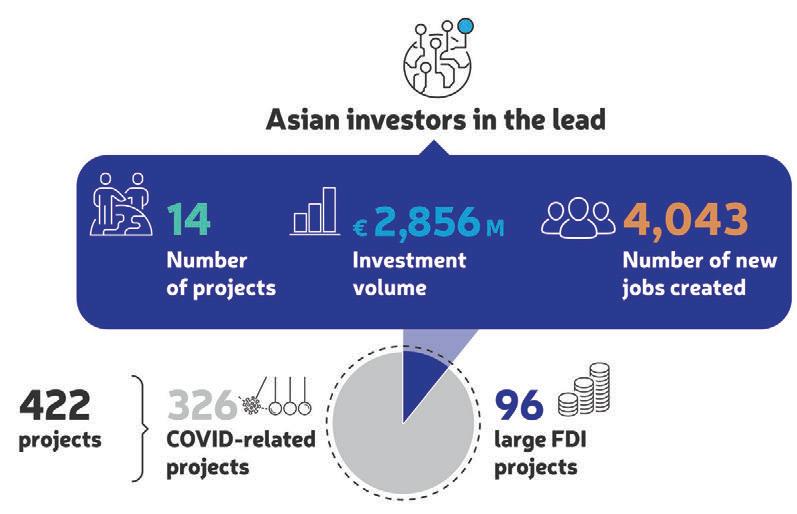

“One of the first large foreign investors to place its trust in the Hungarian economy following the 1990 regime change was Suzuki. We value this trust and continue to strengthen our relationships with our Japanese friends, partners and investors,” the CEO points out.
Keeping up the interest
He highlights that Hungarian business promotion is constantly working on keeping up this interest, and “our ideal business environment helps this effort.” Hungary’s 9% corporate tax is the lowest in the European Union. The government has also reduced the tax burden on the gross salaries paid by employers from 28.5% in 2016 to 13% in 2022. According to the data of the Hungarian Central Statistical Office, Hungary’s real GDP growth rate in 2021 was 7.1%.
The Hungarian skilled labor force is another huge asset that attracts FDI as it is available at a lower cost than in Western Europe.
“Thankfully, we have successfully managed the pandemic from an economic standpoint and today, Hungary is in a position to offer investors a stable and swiftly recovering economy. In addition to our successful vaccination strategy, our economic policy to financially support and incentivize companies, which are committed to increasing investments and maintaining their workforce, has contributed to our economic recovery,” he adds.
INVESTORS
accomplish this task, the CEO explains that from selecting a location, supplier development, financial support and policy advocacy, HIPA supports Japanese investors throughout the entire process. “We function as a one-stop shop that handles all investmentrelated matters. More importantly, we mediate between businesses and the government which speeds up decision making considerably. Closing a deal is just a start, we follow up the whole implementation phase. These relationships ensure that whenever a new project is on the agenda, we can work together immediately in a seamless manner. No wonder nearly 70% of investments stem from companies that already have their operation in Hungary as they are satisfied with the economic conditions here and are eager to expand.”
As for partner organizations in presenting business opportunities in Hungary and attracting Japanese investors to come here, HIPA works closely together with the Hungarian Embassy in Tokyo, which is crucial to forge bilateral relations with the Japanese business community. The Japanese External Trade Organization (JETRO) also plays an important role in improving our reputation, and HIPA also has a partnership with the Japan Institute for Overseas Investment (JOI) and some of the most important Japanese commercial banks. Once Japanese investors get themselves established here, HIPA works to keep them operating in the country. “Apparently Japanese investors are here to stay. In fact, they are the seventh largest investor community in the country. The
Profiting from Japanese business presence
Japanese companies in Hungary are especially active in the automotive sector with Alpine, Denso or Diamond Electric, for instance, introducing new technologies and increasing supply capacities, also in the past year. As to how much the Hungarian economy is profiting from the Japanese business presence here in general, Róbert Ésik points out that Japanese investment has led to some of the most advanced technologies reaching the Hungarian market and these have fast-tracked the automation of our manufacturing processes and boosted our industrial competitiveness.
“We recognize the excellent work ethic and admirable corporate culture which Japanese companies have imparted on the local business community.
Recent Japan investments include Toray Group’s battery-separator film facility, GS Yuasa’s first overseas lithium-ion battery plant, Seiren’s first European synthetic leather car seat cover factory, or Nissin Food’s instant noodle plant expansion,” he says.
One-stop shop
One of HIPA’s main tasks is to attract more investors to Hungary. Regarding the means that the organization applies in case of Japanese businesses in order to
Hungarian government has so far signed strategic partnership agreements with six of them such as Suzuki, Bridgestone, Denso, Zoltek, Ibiden and Alpine. Such partnerships are a sign of long-term commitment since they are meant to incentivize investments of foreign companies in Hungary, increase employment, accomplish higher value-added production, integrate corporations into vocational training and tighten relations with domestic suppliers. Bridgestone alone launched three capacity expanding investments just in the past five years,” the CEO stresses. He adds that HIPA is eager to maintain a close relationship with all existing Japanese investors to help them achieve their business goals. “Our experts are at their disposal at all times.”
From ‘Made in Hungary’ to ‘Invented in Hungary’
There are about 180 Japanese companies present here, providing jobs for more than 30,000 people.
“The overall picture is promising since 2021 marked a record-breaking year in Hungary in terms of FDI volume. In total EUR 5.9 billion was invested in the country, and Asian investors accounted for 60% of the full volume. Japanese companies are well-known for bringing high-tech investments to Hungary. It is essential to keep the pattern to invest into more knowledge-intensive and less labor-intensive projects so that we can continue our journey from ‘Made in Hungary’ to ‘Invented in Hungary’. Some 64,000 people already work in Business Service Centers and this trend should go on. It would be also great to attract more decision-making centers of global corporations. All this could help Hungary move up the value chain, thus create more wealth than ever. Our Japanese friends have proved themselves to be reliable partners and have contributed to the development of the Hungarian economy. We look forward to continuing our close cooperation,” Róbert Ésik concludes.
2022/ II DIPLOMACY & TRADE| www.dteurope.com
12 photo by HIPA


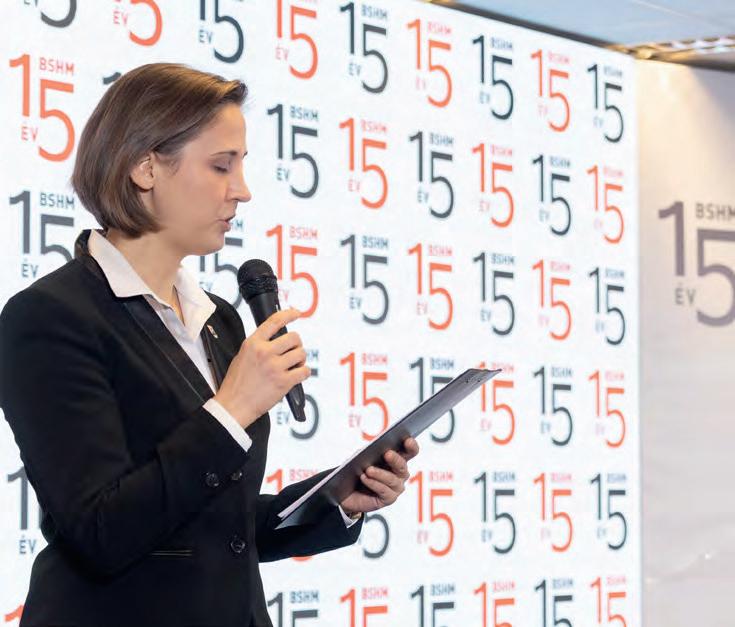
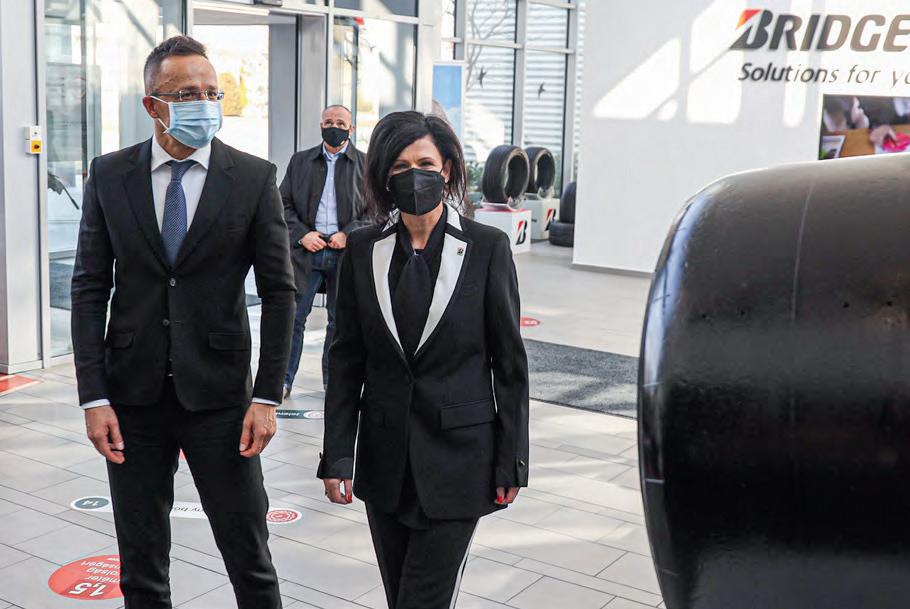


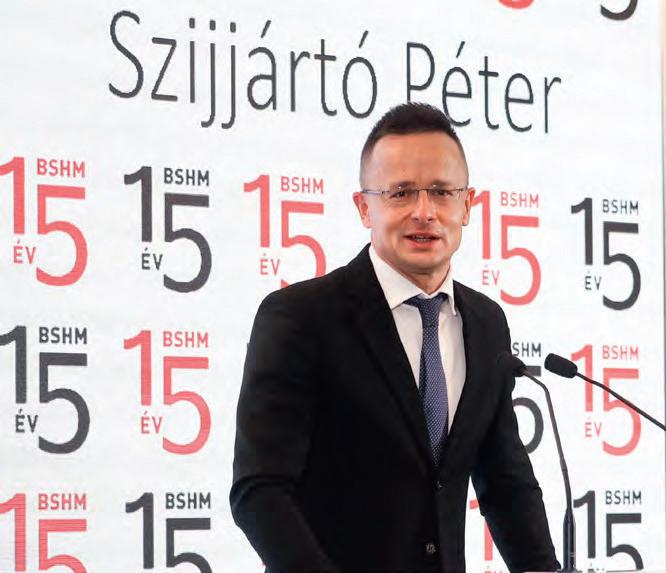



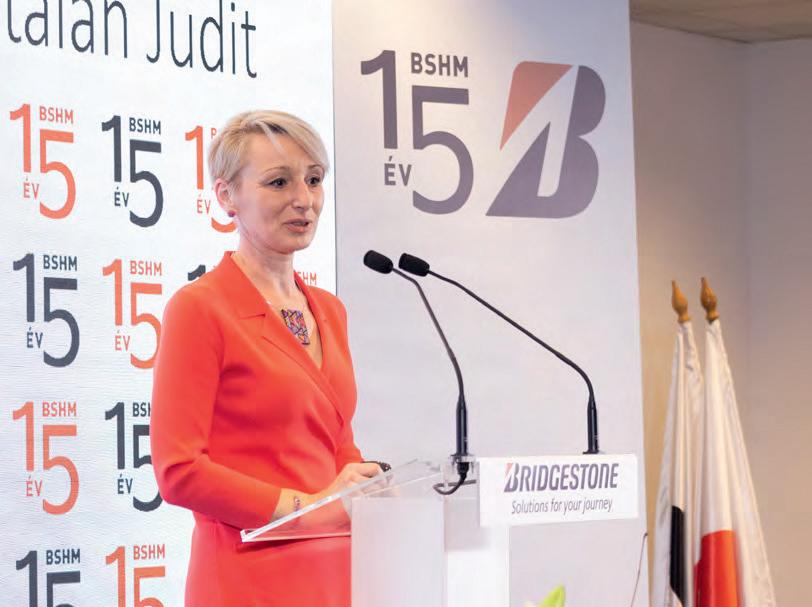
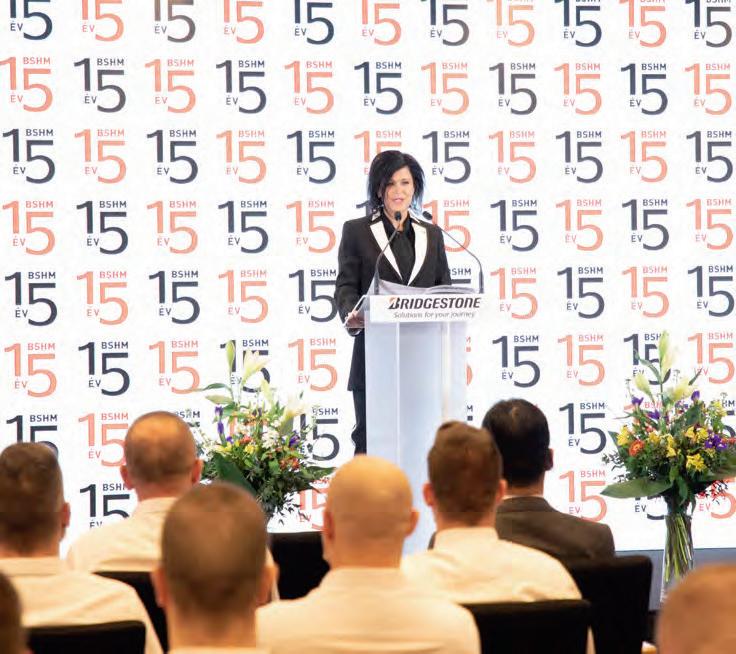


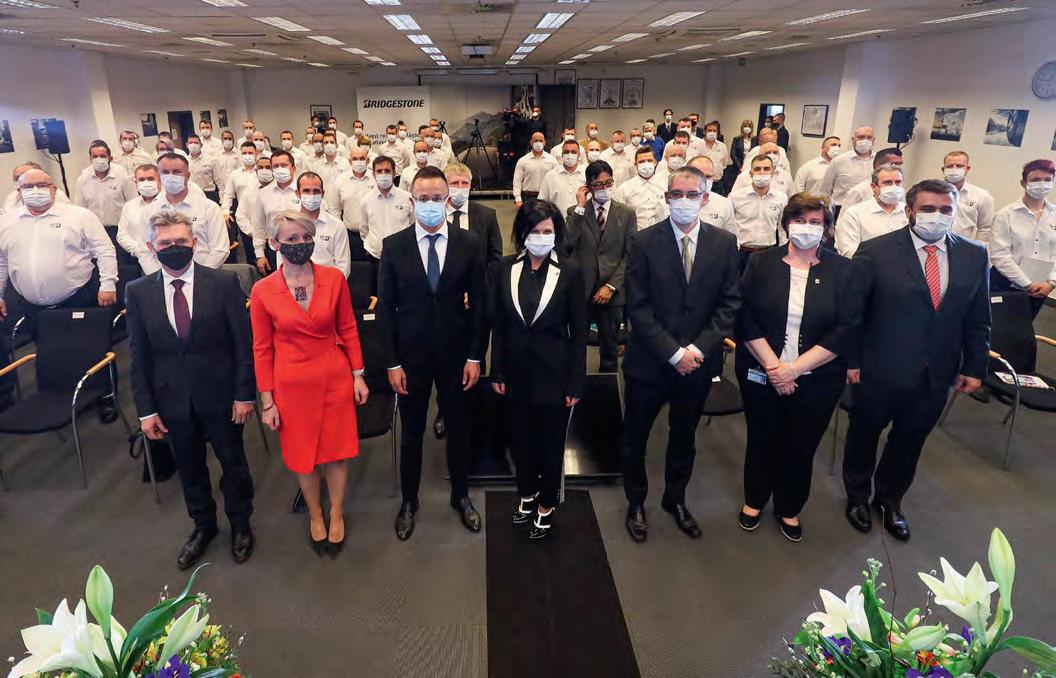
japanese focus
SUZUKI: SECRETS OF A MARKET LEADER
The Japanese brand, which sells hybrid passenger cars in the EU markets in line with the group’s green aspirations, will further expand in 2022 its hybrid selection produced in its Hungarian manufacturing facility in Esztergom, northwest of Budapest. The new hybrid system was made available first in the Vitara model this January and will be followed by the new S-Cross later in the second half of the year.
Investments
With the significant (HUF 16.3 billion) greenfield investment, Suzuki Motor Corporation revived Hungarian car manufacturing after a 50-year hiatus. SMC has steadfastly believed in this country for 30 years and has invested a total of HUF 538 billion in Hungary by 2020, meaning EUR 38.1 million calculated at the exchange rates prevailing at the time of the investment. Since April 2019, the Hungarian plant has been the parent company’s European-based supply center for spare parts and accessories, and its leading automotive center in Central Europe.
Leading philosophy
Suzuki Group believes that the assistance of employees is essential to achieve the company goals and has been a driver of the company’s success in the past one hundred years. Suzuki aims to provide accessible mobility to its customers with cars, motorcycles and outboard engines. “We have reliable, durable, and incomparably compact as well as environmentally friendly products that are easy to use and moreover, available to our customers for relevant value for money. We would like to enrich both our employees and our dealers, and we strive to be of value to the society of every country where we deliver our products. Driving them smuggles merriment into the everyday life,” according to Masato Atsumi, who has been the Managing Director of Magyar Suzuki since 2021.
With 17,650 passenger cars registered, Magyar Suzuki Corporation (SMC) reached 14.48% market share on the domestic new passenger car market in 2021. The brand has been leading new passenger car sales in Hungary for six years.
It plans to significantly increase the share of electrically driven models in its product range from 2030 onwards. As part of this journey, and in line with the EU regulations, the mass production of hybrid Vitara and SX4 S-CROSS models began in Esztergom for European markets in December 2019. In 2020, 65% of production was of hybrid cars. Magyar Suzuki constantly modernizes its production technologies with steps in the direction of carbon neutrality by using its own engineering staff. This includes independent implementation of test productions in the spirit of the so-called ‘greening, technical evaluation of test cars and determination, implementation and monitoring of development directions based on them, independent implementation of subtasks in projects related to the homologation of its products.


Greener Plant, Greener Cars
Innovations and investments
Magyar Suzuki has been leading a five-year research and development (R&D) project implemented in a consortium ending soon, introducing innovations in parts supply and other technology solutions. This program has
received HUF 2,584 billion funding within GINOP 2.2.1-15- 2016-00015 economic development and innovation operational program.
Suzuki is dedicated to a greener future. The Group would like to achieve carbon neutrality by 2050 in all factory units, and for all products globally.
Suzuki is currently working on the development of electric technology required to reduce emissions globally. The company entrusted its subsidiaries, including Magyar Suzuki, to work out and implement the methods within the given target date, that is, 2050. All employees have a role to play in this, just as in all previous developments and optimizations. Suzuki colleagues have a practice of putting forward their proposals. In the last twelve years, they have saved Magyar Suzuki a total of HUF three billion with their development and optimisation ideas. Thanks to such proposals, the company has launched the Greener Plant, Greener Cars internal program to incorporate CO₂ emission reducing technologies into manufacturing processes and cars. Suzuki Group invests 1,000 billion yen (EUR eight billion) in R&D up until the 2025 financial year, including the development of hybrid and electric vehicles, maintaining the well-known high quality of the brand at the same time.
2022/ II DIPLOMACY & TRADE| www.dteurope.com
14
photo by GÁBOR FÉNYES
JAPANESE CARMAKER DEVELOPS
PRODUCTS OF SUPERIOR VALUE BY FOCUSING ON THE CUSTOMER
japanese focus
A BRIDGE BETWEEN HUNGARY AND JAPAN
JETRO BUDAPEST OFFICE REMAINS ACTIVE EVEN DURING THE PANDEMIC
Having been established in 1992, the Budapest office of the Japan External Trade Organization (JETRO), the principal organization for promoting trade and investment relations between Japan and foreign countries, celebrates its 30th anniversary this year.
As to what he considers the greatest achievements of the Budapest presence of JETRO over these three decades, the General Director of the office, Toru Suehiro starts with a short summary of the two countries’ cooperation. “Hungary and Japan have a long way of historic relations. Japan and the Austro-Hungarian Empire signed a treaty of friendship, trade and navigation in 1869. Since then, Japan and Hungary have maintained excellent relations in the fields of trade, business, science, culture and sports, among others. After the change of regime in Hungary in 1989, relations between the two countries began to develop rapidly.”
Supporting with information
The Japan External Trade Organization is a government-related organization that works to promote mutual trade and investment between Japan and the rest of the world.
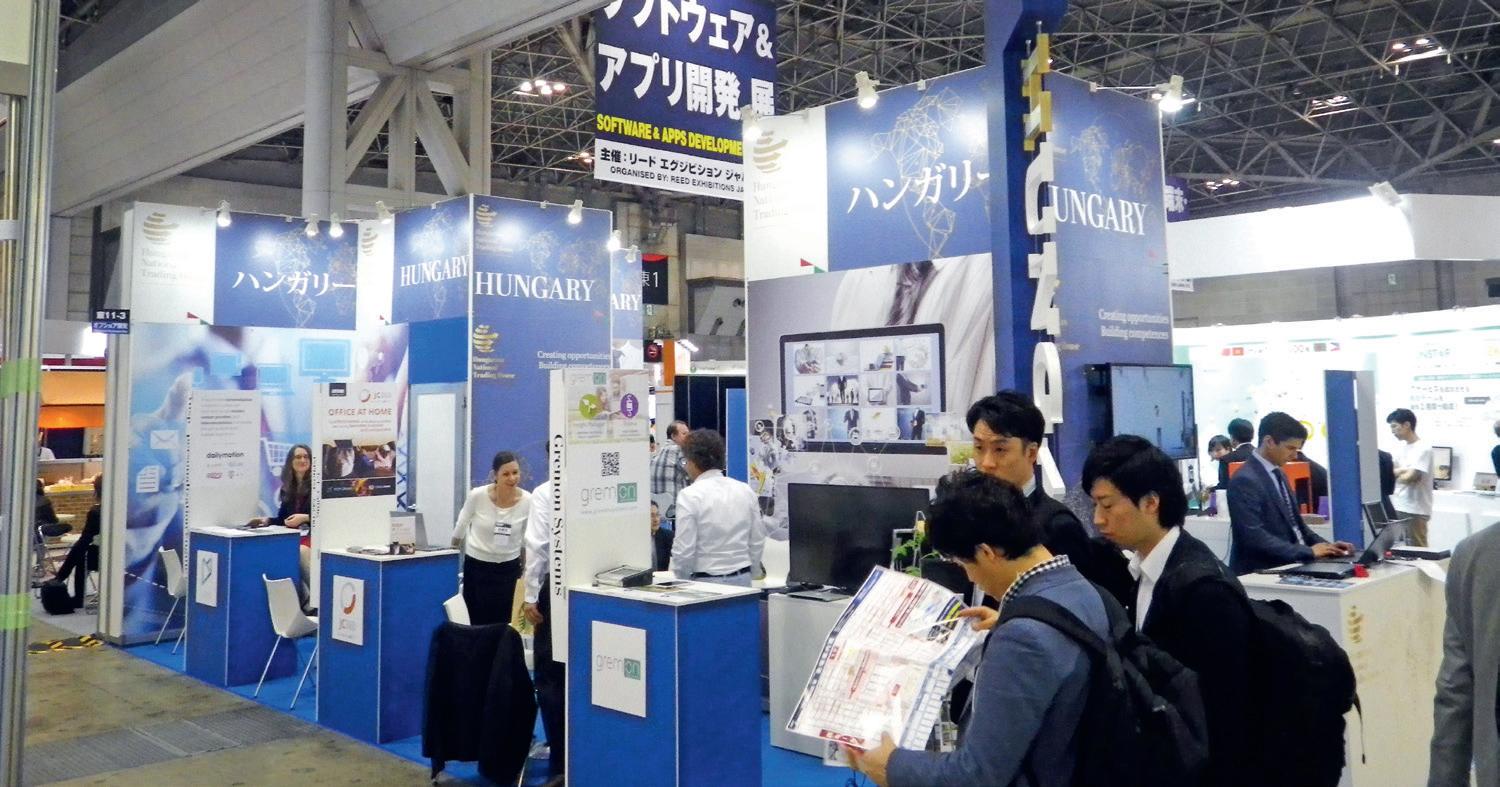
Originally established in 1958 (headquartered in Tokyo and Osaka) to promote Japanese exports abroad, JETRO's core focus in the 21st century has shifted toward promoting foreign direct investment into Japan and helping small to medium size Japanese firms maximize their global export potential. JETRO has 76 overseas offices in 56 countries and 48 regional offices in Japan.
“Ever since the foundation of JETRO’s Budapest office in 1992, we have been continuously supporting Japanese companies with information. We, here at JETRO Budapest try to be a bridge between Hungary and Japan. In the early stage of the Budapest office, the presence of Magyar Suzuki Corporation (founded in 1991) served a good example for attracting Japanese manufacturing companies to set up their factories as greenfield investors in Hungary,” the General Director explains. Many Japanese manufacturing companies came and set up their factories in Hungary and sought to establish good relationships with local suppliers. Therefore, JETRO organized a ‘Reverse exhibition’ in the year 2000 together with ITDH (the predecessor of HIPA, the Hungarian Investment Promotion Agency). The first such event in the central European region was attended by 50 Japanese companies, he adds. There are currently 184 Japanese companies in Hungary (as of July, 2021), employing more than 30,000 people. Japan is the largest Asian greenfield investor in Hungary and the largest Asian market for Hungarian food products. Japanese companies represent an outstanding added value for the Hungarian economy, especially in the industries most affected by the transformation known as the Fourth Industrial Revolution.
“Also, we promote the importance of Japan’s market to the Hungarian business society. Providing the experts’ consultation, Hungarian IT companies could access to the Japanese market. JETRO Budapest promotes the socalled ‘Invest Japan’ program to Hungarian IT and biotech firms wishing to do business in Japan. At the end of the process, they can open their own entities in Japan in the form of representation office, joint venture,
etc. So far, three Hungarian companies have already established their office in Japan and there will be more to follow hopefully this year and also in 2023 when travel restrictions in Japan are lifted. It is essential for Hungarian companies to meet face to face with Japanese clients in order to do business in Japan,” the General Director highlights. The main partners of JETRO Budapest in all these activities include the Hungarian
Investment Promotion Agency (HIPA) and Ministry of Foreign Affairs and Trade, the Association of Hungarian Automotive Industry (MAGE) and Chamber of Commerce and Industry of Hungary (MKIK). “Besides that, the Hungarian Embassy in Tokyo is always our reliable partner when JETRO Budapest promotes the Hungarian business opportunities to Japanese firms in Japan and also assisting Hungarian business delegations or businessmen to open doors for new businesses in different sectors,” he points out.
Defying the pandemic
Despite the past two years plagued by the new coronavirus epidemic, JETRO’s Budapest office has successfully cooperated with businesses here. As Toru Suehiro puts it, “the coronavirus reminds us of the importance of resilience.” Since many Japanese companies focus again on the CEE region, JETRO Budapest made efforts even during these pandemic years to provide basic business information such as incentives, subsidies and legal regulations to the Japanese business society. For example, Seiren, a Japanese company specializing in the production of automotive interior materials and textiles, decided to establish their first factory in Europe in Pécs, southern Hungary with an investment amount HUF 15.2 billion. A fine example of people-to-people relations was when – in May 2020 – a young Japanese chef in Budapest, wishing to highlight the work of healthcare professionals fighting in the frontline against the new coronavirus and untiringly defying the danger, decided to donate Japanese food to the workers of the Péterfy Sándor Street Hospital-Clinic and Trauma Center in Budapest’s District 7. In organizing and coordinating this support, the WAFU Bar was assisted by JETRO’s Budapest office.
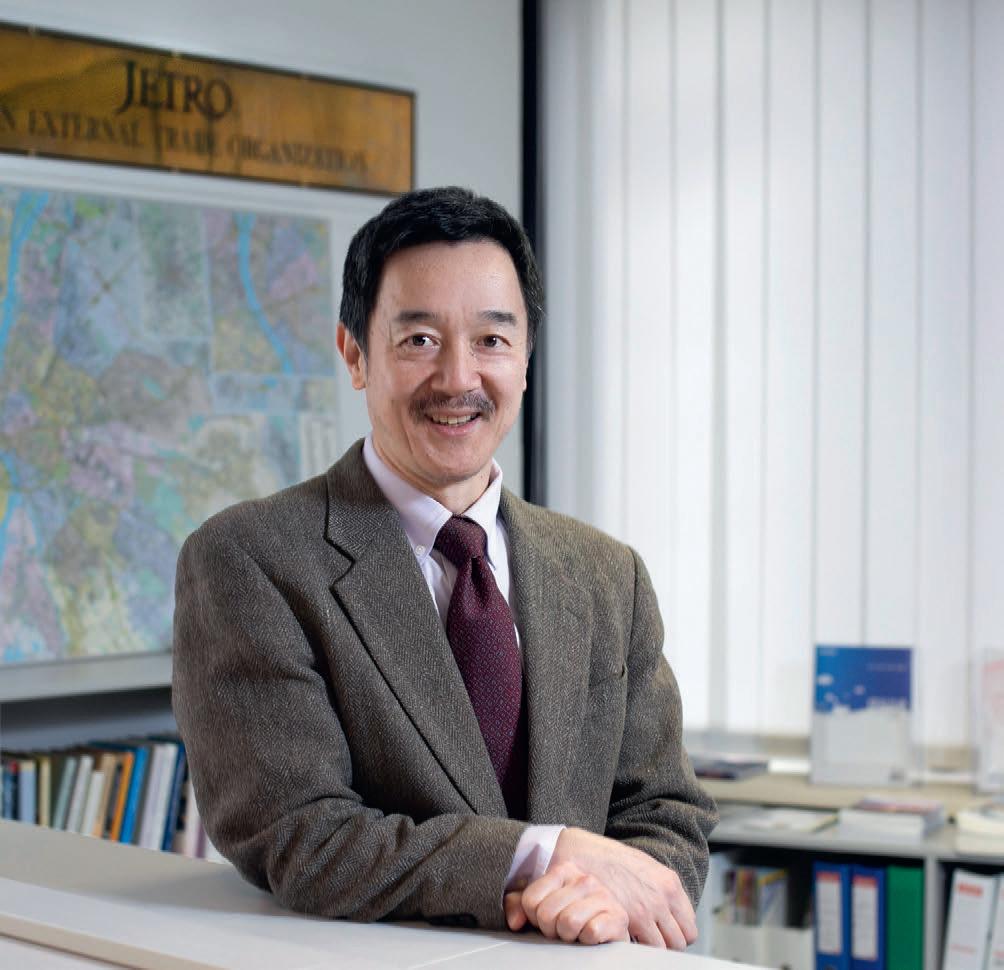
“Also, we introduced the EU-Japan EPA (Economic Partnership Agreement), which has been in force since February 2019, to the Hungarian business society together with the Hungarian Chamber of Commerce and Industry. This can create many business opportunities to Hungarian exporters to Japan in the upcoming years by lowering tariff rates.” The pandemic forced some activities go online. The General Director stresses that after the emergence of the pandemic, most of the real business activities “evaporated.” As a result, JETRO shifted most of the activities into a digital format such as collaboration with Alibaba and opening a special Japanese corner named ‘Japan Mall’, establishing the business-to-business site ‘Japan Street’.
Introducing authentic sake
One important task of JETRO is promoting the export of Japanese goods to Hungary, making Hungarian businesses and the public aware of Japanese products. Regarding this aspect of its activities, the Budapest office is currently promoting Japanese sakes and liqueurs in Hungary. “At the moment, most of the sake sold in Hungary are not from Japan. So, we will try to introduce very sophisticated sakes made in Japan to the Hungarian market. You may be surprised with its difference in their flavor and taste. We are now preparing such an event in cooperation with the Japanese Embassy in March this year,” the General Director concludes.
www.dteurope.com |DIPLOMACY & TRADE 2022/ II 15 photo by DÁVID HARANGOZÓ, JETRO
japanese focus
SERVING SOCIETY WITH SUPERIOR QUALITY
BRIDGESTONE BUILDS A STRONG BRIDGE BETWEEN HUNGARY AND JAPAN
“Serving society with superior quality” is the mission that has defined the operation of Bridgestone Tatabánya as an integral part of the company group for 15 years. Like the parent company, the regional factory unit shapes its operations and global business policy according to the principles of its founder, Shojiro Ishibashi.
Developments at the Tatabánya plant, founded a decade and a half ago, do not stop. It is at the forefront of applying the latest technologies and does not forget about social responsibility either.
Unstoppable development
15 years ago, Bridgestone Tatabánya Production Ltd. started production with 361 employees on just over 47,000 m², producing 400,000 tires a year. Today, the factory's floor space has grown to 154,200 m² and its production capacity to 6.5 million tires a year, employing nearly 1,300 people. The Tatabánya plant is one of the youngest Bridgestone EMIA sites, and in a decade and a half, it has become an international giant and one of the largest employers in Komárom-Esztergom County. After Japan, the EXAMATION digital production technology was applied here for the first time in Europe. The solution ensures outstandingly consistent quality with complex data collection and analysis processes. The new warehouse, built as part of the HUF 12.6 billion support program in 2019, has increased the total warehouse capacity to 600,000 tires. The improvements do not stop there. Following the parent company's principles of excellence and sustainability, the factory started its transformation into a smart factory in 2019. The aim is to complete the transformation by 2023 and to fully digitalize not only the tire production but also the production of semifinished products, energy supply, maintenance, production tracking and production planning.

Committed to a sustainable future
For the company, the issue of creating a sustainable future is more than a wellsounding phrase. Following the principles of
the parent company, Bridgestone Tatabánya is also a committed supporter of initiatives to create a green future and sustainable mobility and is a proud proponent of the company’s
‘Our Way to Serve’ commitment. The focus of the concept is on finding solutions that the company can use to further reduce the environmental impact of its operations and
improve the energy efficiency of its processes. The Tatabánya plant also supports the global ambition of Bridgestone to halve its carbon footprint by 2030 and to cover its entire energy consumption from sustainable sources by 2050. Following the idea of sustainable operation, the Hungarian unit has been covering 100% of its electricity needs from renewable energy sources since March 2020. In 2019, the global headquarters of the group recognized the environmental efforts of the Hungarian plant with the Gold Leaf Prize.
Strength in unity
In addition to its industry successes and goals, Bridgestone Tatabánya also pays special attention to the well-being of its employees. The supportive environment created within the walls of the factory allows workers to balance work and private life. Bridgestone Tatabánya firmly believes that the real power is in the community, so it makes everyday life cloudless with a number of communities forging internal activities, employee satisfaction campaigns, volunteer promotions, sporting events and family days. In addition to community events, the tire factory maintains their health through regular screening programs and sports promotion activities. One of the company’s long-standing slogans is “Bridgestone puts the health of its employees first”. As in all areas of its activity, the traditions and values of the parent company play an important role in its employee activities. Following the traditional Japanese custom, in the spring of 2022, as part of the Sakura Festival, workers will greet the arrival of spring and the cherry blossoms. The efforts of the Hungarian unit were also recognized by the industry, and in 2019, 2020 and 2021 it got the title of ‘Family-Friendly Workplace’ from the Ministry of Human Resources.
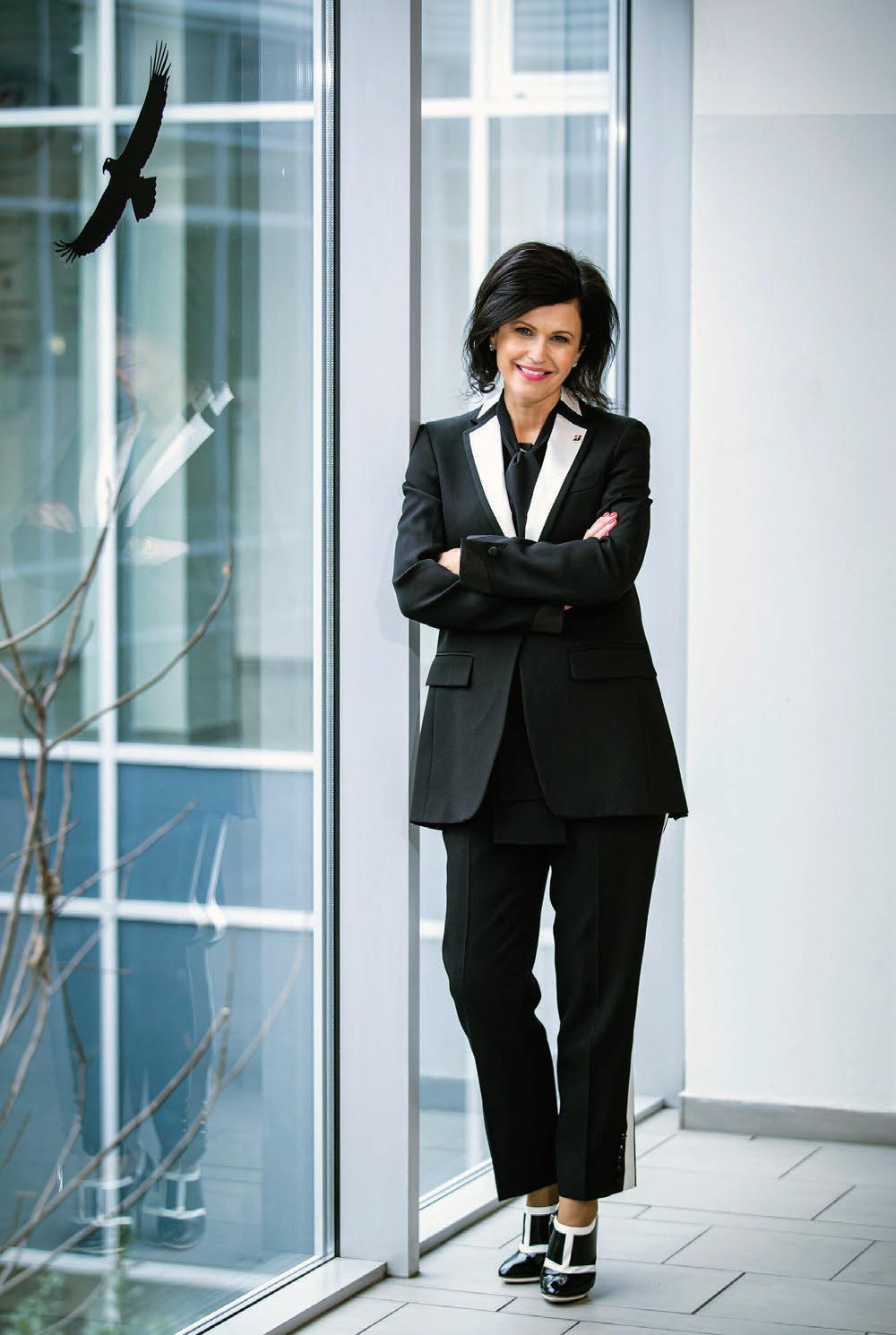
Responsible company
Bridgestone Tatabánya is respectful and attentive to the customs of the Japanese parent company, adapting its values. As a result, the Hungarian factory is committed to the people living in its environment. Over the past five years, it has supported local health care institutions, law enforcement and social organizations with tire donations, material donations and financial contributions. Together with its employees, it has raised more than HUF 2.5 million for the Red Nose Clown Doctors foundation through internal charity campaigns and cleaned up 1.5 tons of rubbish on the nearby nature reserve hiking trail. In the course of the pavement painting program, a total of 11 busy pedestrian crossings were made safer in Tatabánya. In addition, four rest areas and a service point with selective waste disposal were set up along the cycle paths in Környe. Shojiro Ishibashi's credo is an ideal that Bridgestone's Tatabánya factory follows every day. The company's founder believed that a company that does something for society and for the environment can prosper forever, unlike other companies that focus only on profit. This idea, from the desks through the communal spaces to the production lines, permeates the entire factory.
2022/ II DIPLOMACY & TRADE| www.dteurope.com
16 photo by BRIDGESTONE
PRESIDENT & MANAGING DIRECTOR AT BRIDGESTONE TATABÁNYA, MELINDA TOPOLCSIK
The legendary Vitara is waiting for its next adventure. Are you ready?







With its rugged SUV design and 4x4 capabilities, you have the freedom to go wherever you want in style — from city streets to epic landscapes. Practical, spacious and versatile, the Vitara comes equipped with ALLGRIP 4x4, strong hybrid and a range of cutting-edge technology that will ensure you’re confident, connected and in control every time you drive. The open road awaits, adventure is just around the corner and the Vitara is ready when you are. Question is, where to next? Experience the Vitara for yourself and discover why the name is legendary.
Fuel consumption and emission of Suzuki Vitara equipped with strong hybrid depending on specifications and motorization: 4,684-7,083 l/100 km based on WLTP standard. CO2 emissions during various usages: 105,98-160,45 g/km based on WLTP standard. All pictures shown are for illustration only. We reserve the right to carry out modifications without previous notice. Further details: suzuki.hu



auto.suzuki.hu/vitara

japanese focus
DESIGN & BUILD A LA TAKENAKA
MAJOR JAPANESE GENERAL CONTRACTOR CONDUCTS SUCCESSFUL OPERATIONS IN HUNGARY
A large number of Japan’s most prominent landmarks and an impressive number of high-rise buildings both in Japan and around the world have been created by Takenaka Corporation. It is the biggest Design & Build general construction company in Japan providing services in architecture, engineering, and construction. Takenaka has a long and storied history that is rich in tradition and spans more than 400 years. It is still a family-owned business managed by the 17th generation descendant of the founder who began the business in 1610.
Takenaka has constructed some of the most important buildings in Japan, including Tokyo Tower, which is a radio, telecommunication and observation tower built in the capital’s Minato Ward. With a height of 333 meters, it is one of the tallest steel structures in the world and it was the iconic & representative building of 2020 Olympic Games. For safety reasons, it is painted white and orange. In 1953, television broadcasting began in Japan, and the Kanto region needed a tower that would provide frequency transmissions. With great care having been taken in planning earthquake resistance as much as possible, Takenaka Corporation began work in 1957 with 400 workers a day committed to the edifice, which was built of iron and scrap metal from discarded tanks. Since opening in December 1958, Tokyo Tower has received more than 150 million visitors and become an iconic landmark, particularly at night.
Around the world
Since 2009, Takenaka has been a member of CTBUH (The Council on Tall Buildings and Urban Habitat: the world's leading resource for professionals focused on the inception, design, construction, and operation of tall buildings and future cities). The company has built more than 40 buildings higher than 150 meters, including Abeno Harukas (300m high), which is Japan’s tallest building. This skyscraper received the Award of Excellence in 2014. In addition to architecture in Japan, Takenaka has constructed first-rate buildings all around the world. Among these, Capita Green in Singapore won the "Best Tall Building Asia & Australasia" title in 2015.

Design & Build
The basis for Takenaka’s success is the full Design & Build (D&B) service, which enables the company’s clients to realize their projects as fast as possible, with the most optimal construction cost and outstanding Japanese quality. The turnover and the number of professionals are constantly increasing at Takenaka year by year. It is safe to say that in the early 2010s in Hungary, the majority of clients had not even considered the possibility of using a complex D&B contractor service, which is basically due to the long-established internal decision-making processes of companies. Due to economic developments in the world, the time available for the realization of investments has been radically
reduced, and the aim has been to optimize construction costs to the limit while fully meeting quality requirements. The solution to these new challenges is Takenaka's worldwide experience in D&B services, which goes back over hundreds of years. Subsequent to the Client's needs assessment, the following complete, one-stop design and engineering services are included: finding the suitable property, property evaluation, feasibility study, basic design, building permit and permission process, execution design, complete building construction works, asbuild design and occupancy permit process. After these tasks, the Client, after having formulated his requirements, has to attend the handing over of the keys of the building with the occupancy permit. Between these two
IN NUMBERS
The European HQ of Takenaka EU was founded in 1973 in Düsseldorf, Germany, and is currently represented in 13 different European countries.
Takenaka EU's total number of industrial buildings in Europe exceeds 1,400, covering more than 11 million square meters.
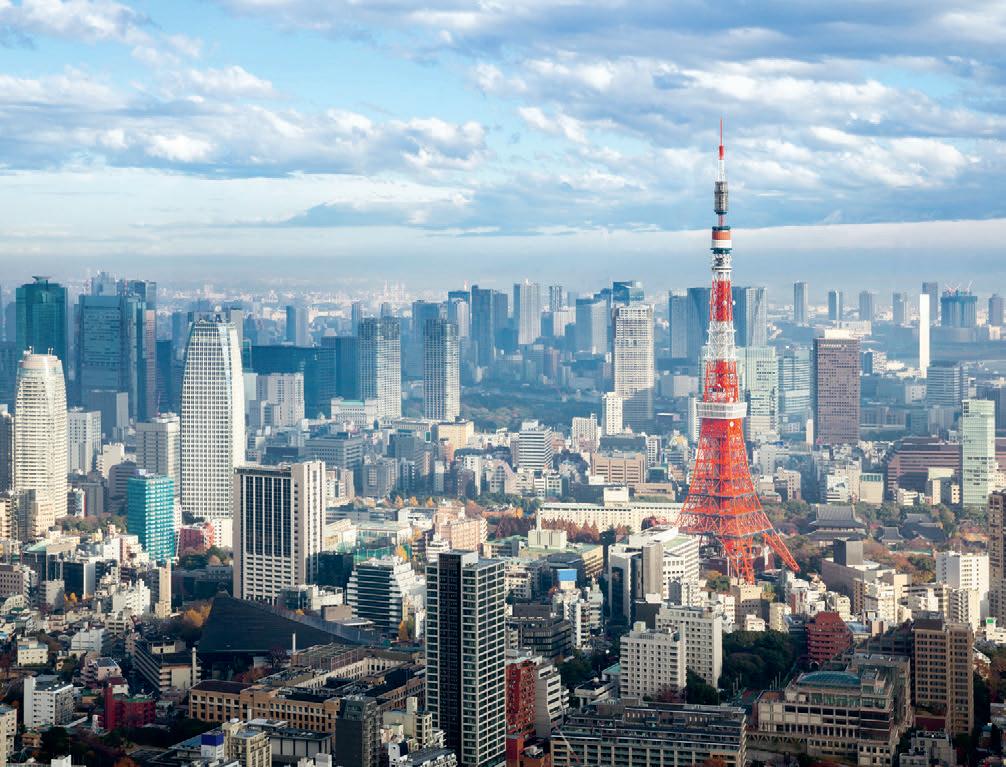
The Hungarian subsidiary of Takenaka Europe GmbH was founded in 1994 in Budapest.
Takenaka Europe GmbH Hungary Branch has realized more than a hundred projects in Hungary since its establishment, with a total area of more than one million square meters, which is 10% of the total area of the projects realized by Takenaka EU.
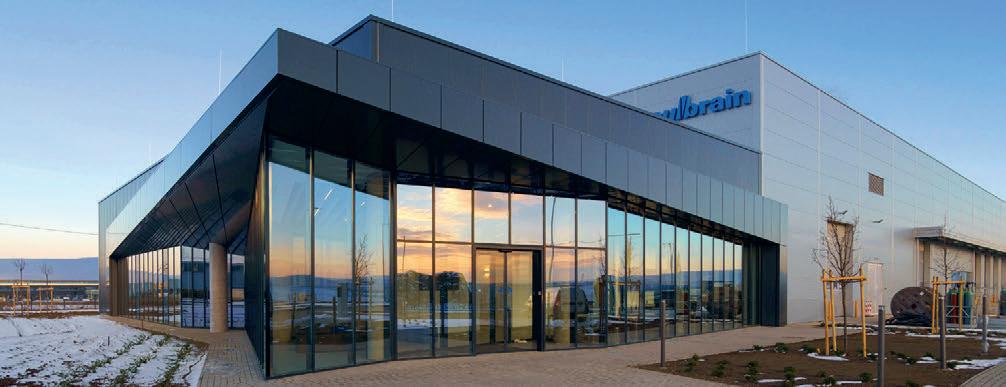
During its 28 years of operation in Hungary, TAKENAKA has become a premium service provider for the 32 Japanese companies that have established subsidiaries/factories in this country.
project milestones, the sole responsible for the Client's project is TAKENAKA EUROPE GmbH. As a result of the success of Takenaka’s full service and its long-term strategy over the past 28 years, in addition to Japanese firms, the company now has countless clients from Germany, the United States, France and South Korea that confirm the results and the fact of Japanese precision and reliability. One of the best examples of customer satisfaction is the reference certificate Takenaka received from one of its American clients, that, based on its experience in Hungary, TAKENAKA was the only one to complete the project on time, to the expected quality and within the contracted construction cost, without the cost of the any additional work.
One of the best examples of the success of TAKENAKA D&B general construction service is the Electrolyte Liquid Factory project of SOULBRAIN HU Kft. in the Tatabánya Industrial Park, west of Budapest.
Over the past years numerous component supply factories, for the production of electrically powered vehicles, have appeared in Hungary. Additionally, the existing large Hungarian manufacturers of electric vehicles are also considering a complete product change. Thanks to the product development of the major car manufacturers, numerous suppliers have arrived in Hungary. One of the most important supplier segments in this country is the battery industry.
The emergence of battery factories in Hungary coincided with the idea of SOULBRAIN's South-Korean headquarters to set up a factory in Hungary. Among their objectives was the complex realization of their project within the planned timeframe and at the most optimal cost.
During the realization of the factory of 4,330 square meters, TAKENAKA D&B's services included the search for the land, the management of the building permit process with the design of all necessary documentation, the design of the execution drawings, the complete construction work of the factory, the provision of the execution drawings and documentation design of the as-build drawings and the preparation of the handover document as well as the management of the occupancy permit process.
2022/ II DIPLOMACY & TRADE| www.dteurope.com
18 photo by TAKENAKA, DEPOSITPHOTOS.COM, ANDRÁS MÓRI
TAKENAKA
DESIGN & BUILD
SERVICES IN PRACTICE

www.dteurope.com |DIPLOMACY & TRADE FEBRUARY 2015 19 FACEBOOK COM / LEXUSHUNGARY INSTAGRAM COM / LEXUSMAGYARORSZAG
DISCOVER
SHOWROOMS Vehicle shown in the photo is for illustration only. The data measured based on WLTP cycle for NX 450h+ WLTP combined weighted fuel-constumption is 0,9–1,1 l/100 km, weighted combined CO 2 emissions are 20,4–25,7 g/km. For further informaion visit www.lexus.hu
THE ALL- NEW LEXUS NX SELF- CHARGING & PLUG - IN HYBRID
AT OUR
japanese focus
REDEFINING THE MID-SIZE LUXURY SUV SEGMENT
LEXUS EXTRACTS THE FULL POTENTIAL OF THE VEHICLE THROUGH ELECTRIFICATION TECHNOLOGY
Over the years, Lexus has enjoyed tremendous success globally, in Europe and in Hungary, thanks to the success of its eco-friendly model portfolio. Today, Lexus, which sells 99% self-charging hybrid electric vehicles (HEVs) in Europe, and has sold more than 2 million partially or fully electrified cars worldwide, is going even further in greening the luxury car segment.
In 2022, the brand's first plug-in hybrid electric vehicle (PHEV), the Lexus NX, will arrive in Hungary, and its first two battery electric vehicle (BEV) models, the Lexus UX and Lexus RZ, will be launched, followed by a battery electric range in the years to come. By 2030, 100% of Lexus sales in Europe, North America and China will be battery electric, and by 2035, production will be carbon neutral. Among the electric Lexus models in the pipeline is the world's first solid state battery sports car, which promises 0 to 100 km/h in two seconds and a range of 700 kms.


Lexus Driving Signature continues
When unveiling Toyota Motor Corporation’s full global battery electric line-up this past December, the president of the corporation, Akio Toyoda highlighted that by 2025, Lexus will introduce more than 30 new models including hybrid electric vehicles, plug-in hybrid electric vehicles and battery electric vehicles in more than 90 countries and regions. “Furthermore, we will expand the options for carbon-neutral vehicles by offering a full line-up of battery electric vehicles (EVs). Specifically, we plan to roll
out 30 battery EV models by 2030, globally offering a full line-up of battery EVs in the passenger and commercial segments.”
Lexus strives to be the brand that people who know authenticity choose at the end of the day, he said. “As brand holder, I continue to believe that Lexus has pursued unique styling and a unique driving signature, and, as a pioneer in hybrid electric technology, it has refined its electrification technology. And now, Lexus is embarking on a new chapter, extracting the full potential of the vehicle through electrification technology… That is what electrification means to Lexus.
We will deliver a unique electrified Lexus that combines linear motor acceleration/ deceleration, brake feeling and exhilarating handling to further pursue the joy of driving.”
In particular, the Corporation believes that the Battery EV will become the future symbol of Lexus as a brand that most clearly expresses the evolution of the automobile industry brought about by electrification. The latest of these models is the Lexus RZ. The process of strengthening the fundamentals and pursuing the Lexus Driving Signature will not change even if it is a Battery EV. The endless pursuit
NX, A NEW CHAPTER FOR THE LEXUS BRAND
Toyota says its all-new Lexus NX is much more than a second generation of Lexus’ mid-size luxury SUV, it opens a next chapter for the Lexus brand. It heralds new directions in design, new powertrains, including Lexus’ first plug-in hybrid electric, and a leap forward in dynamic performance that delivers a greater and more rewarding connection between driver and machine with the Lexus Driving Signature. The NX also debuts a new multimedia platform that takes connectivity, information and convenience to a higher level, and benefits from expansion of the scope and functionality of the next generation Lexus Safety System + active safety and driver assistance systems to help guard against an even wider range of accident risks and reduce the burden on the driver. With 95% of the vehicle’s parts are newly developed, Lexus is redefining the mid-size luxury SUV segment.
As Chief Engineer Takeaki Kato explains, “the new NX is designed to meet the diverse lifestyles of customers around the world with a complete renewal of its key strengths, including electrification, design, driving performance and advanced technologies to broaden its appeal.”
of the Lexus Driving Signature will move to the next stage through development of the new Sports Battery EV. “With bold proportions and low ride height essential to a sports car, it will showcase the unique driving performance of a Lexus and become a model that symbolizes the future of the brand. Acceleration time will be in the low two-second range, cruising range over 700 kms, and with the possible use of solid-state batteries in mind, we will aim to create a truly high-performance Battery EV. Through Battery EVs, we will develop Lexus into a brand that offers a variety of experiences harnessing performance development that only a car maker like Lexus could do, and by honing the craft of making ever more personal products. Lexus will develop a next-generation battery EV sports car that inherits the driving taste, or the secret sauce, of the performance cultivated via the development of the LFA. We will extend the driving taste refined this way to other models as we evolve Lexus into a brand centered on battery EVs,” the President pointed out.
Technology of the future
As part of the effort to seamlessly integrate technology into future vehicles, ‘Lexus Interface’ was introduced, which allows drivers to easily access their favorite music, navigate with a crisp and clear map, and utilize Google Point-of-Interest searches to find their preferred destinations easily. A trial period for this feature will be at no extra cost at the original purchase or lease date. Cutting-edge tech is exemplified in models including the 2022 Lexus NX and 2022 Lexus LX, which both feature the new Lexus Interface, an available Digital Key that locks and unlocks the car with a smartphone, and an available digital electronic rear-view mirror courtesy of an HD camera that is designed to expand the driver’s field of view for maximum visibility behind the vehicle. In August 2021, Lexus also launched the mobile Collision Assistance service, a justin-time support offering accessible moments after a collision. By providing drivers with guidance through accident documentation and access to claims and management services, Collision Assistance helps drivers in their moment of need during those critical minutes after an accident occurs.
photo by LEXUS
20
2022/ I I DIPLOMACY & TRADE| www.dteurope.com
LEXUS NX 450 h+
LEXUS RZ 450 e
“We are a company with a history of almost 170 years during which many generations have passed on knowledge and traditions to each other, and through this, we want to bring the same Dreher knowledge and enthusiasm to our everyday work in a modern environment, in the 21st century. In other words, we want to build a bridge between tradition and modernity,” the General Manager points out. He adds that Dreher is a dominant player in the Hungarian beer market, in fact, a market leader and they try to act accordingly. “Our most important task is to create value, and within this we try to influence and shape trends in the beer market.”


Pandemic-related challenges
The past two years have been difficult and challenging in the beer industry as well. As Gábor Békefi puts it, “one aspect was that we had to look after the health of our own colleagues, to ensure that they got through these two years in good health, and a series of measures were taken in-house to enable our colleagues to look after themselves and their families, while ensuring the continued operation of the brewery. The business challenge was that our company also had to deal with a huge loss of revenue through the closure of the catering channel, which came at the expense of profitability in 2020. Then, we were better prepared for 2021, which thus turned out much better.”
He sees the hospitality industry coming back to normal trends, although slower than expected and hoped. Also, the pandemic has had a huge impact on the supply chain situation in the world.
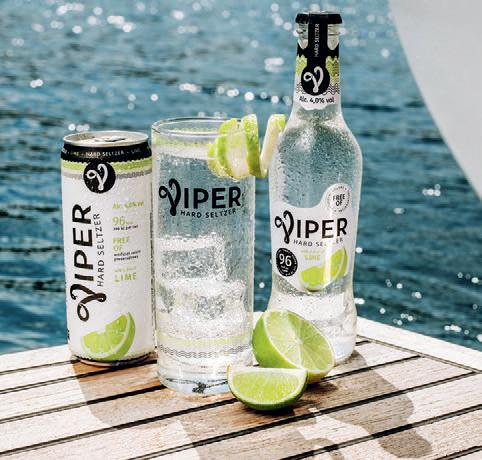

“As the catering industry was closed, some of the consumers moved to retail channels, and the demand for certain packaging suddenly increased. In the meantime, of course, part of the economy was shut down and the consequence of this imbalance was that there were supply problems with certain basic and packaging
japanese focus

BUILDING A BRIDGE BETWEEN TRADITION AND MODERNITY

PANDEMIC CHALLENGES TACKLED BY INNOVATIVE IDEAS AT DREHER BREWERIES
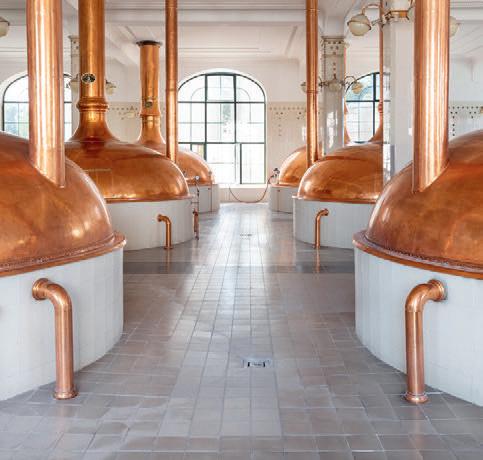

It was thirty years ago that the Kőbánya Brewery became a shareholding company, it was 25 years ago that it took up the name Dreher Breweries and it will be five years this April that the Japanese Asahi Group Holding announced completing the acquisition of the company among other businesses in the region. On all these anniversaries, General Manager Gábor Békefi talks to Diplomacy&Trade about the challenges they face as well as the innovative ideas and sustainable operation that characterize Dreher Breweries Plc.
materials, and so for most of last year, we faced the challenge of how to keep the factory running and it took the heroic efforts of our colleagues to deal with unexpected situations,” he adds. Another aspect of this global supply chain problem was that raw material prices started to rise at a very high, unusually high rate. A good example of this is that the price of aluminum rose by more than 40-50% last year, or the price increase for cereals was over 30%, which also had a negative impact on the financial management of the brewery. “Each of these situations is unusual, each is something that has not been part of our lives before, and each requires ad hoc quick fixes,” the General Manager notes.
Novelties
The year 2021 got off to a strong start at Dreher Breweries in terms of product innovation, with the latest trend in alcoholic beverages, the Hard Seltzer, arriving straight from the US. Thanks to the commitment of Asahi Europe & International and Dreher Breweries to innovate and follow consumer trends, the beverage category, which sits between beers and traditional long drinks, was launched on the Hungarian market in March. Hard Seltzer is a transparent carbonated alcoholic beverage, typically flavored with hints of fruit where the desired alcohol and carbon dioxide levels are achieved through fermentation. Another surprise of the spring was the launch of Kőbányai, a legend in the Hungarian beer market, previously only known in the form of a light lager, with a grapefruit-flavored 1.5% radler and a lemon-flavored non-alcoholic product. The launch of the latter is in line with Dreher Breweries' commitment to responsible consumption of alcohol, with 20% of its product portfolio to be non-alcoholic by 2030. For the summer, Dreher Blueberry flavored beer is available on store shelves in a 0.5-liter metal
can. In addition to the two types of hops used in production and the tart flavor of blueberries, this newest Dreher variant is characterized by a pleasant blueberry aroma. The market for flavored beers has been growing very dynamically for years, both in terms of volume and target audience.
Actively Together
After 2020, 2021 continued to focus on supporting local and small communities suffering from the negative COVID-19 impacts as well as the revitalization of community life and hospitality. In the spring, Dreher conducted representative research on 24 brands, which revealed that twothirds of the country specifically missed local community events during the pandemic, and even more plan to attend one in the near future. Building on this, the non-alcoholic beer brand has launched a sponsorship program for local communities, supporting them to get back to life as soon as possible. Through the ‘Dreher 24 Actively Together’ competition, the brand provided, in the summer of 2021, over 20,000 non-alcoholic products through sponsorship to local community events that focused on sport and community entertainment.
“Our focus throughout the year was also to contribute to a successful reopening by providing a quality beer experience and make hospitality all about quality time spent together again. To this end, 200 bartenders in July, and 150 more by the end of August, were carefully trained in our nationwide Tap Quality Program, our initiative to promote a quality beer experience based on bartender expertise and preparation,” Gábor Békefi explains. He adds that “in 2021, we continued to strive to ensure that the true beer experience is not just on the shelves of shops and in catering outlets, but also outside the four walls, with a focus on hygiene and safety. Few festivals were organized but we tried to provide our customers the direct and unique brand experience, which is best experienced at festivals. We were present with Dreher pop-up bars and Pilsner Urquell trucks at a 15-stop gastronomy event, among other places and we also organized several summer sampling events.”
Dreher closed the summer with a really exciting innovation, building a Beer Workshop, operating independently from the historic brewhouse of Dreher Breweries, a workshop for creative recipes and home to a new Hungarian brand. The first two beers of the hospitality-focused ANTL brand pay homage to the company's founder: the ANTL Vienna Style Lager is a modern interpretation of the beer style that earned Antal Dreher the name ‘King of Beer’ nearly two hundred years ago, and the ANTL English Style Summer Ale recalls his study trip to England, which inspired the subsequent sharing of knowledge at Dreher. In the fall, Dreher again came up with something new: a unique streetwear capsule collection designed by the well-known Hungarian urban designer and graphic artist Imre Fork for the Brewery, the General Manager concludes.
www.dteurope.com |DIPLOMACY & TRADE 2022/ II 21
photo by DREHER, MÁTÉ CZABÁN
japanese focus
THE SCULPTOR'S WIFE
CHIYO WAGNER SET UP A FOUNDATION TO CHERISH THE MEMORY AND WORKS OF HER LATE HUSBAND


The Japanese widow of Hungarian sculptor Nándor Wagner passed away last October. For three decades, Mrs. Wagner Chiyo was a tru e companion of her husband and – after his death – she worked to preserve his artistic legacy.
Born in Sapporo on September 22, 1930, she was the fourth daughter of the Akiyama family, one of the founders of the city. The little Chiyo was kind of a wild girl, interested in everything, but she was aware of the proper polite order. She learned easily and quickly. She finished her schooling during the war years. At fifteen, she lived through the surrender of Japan and the American invasion. Later, she graduated from Japan's first women's university, Japan Women's University, with a degree in English Language and Literature in 1954. The motto of her university "find your ideal lifestyle and be a woman who continues to shine" has guided her throughout her life.
Meeting a master
An eventful decade followed in her life. She and her researcher husband lived first in Tokyo and then, for a year, at the prestigious Harvard University and Lund University campuses, where she continued her artistic studies. In 1960, she enrolled in a drawing course with an ethnic Hungarian artist, who emigrated from Hungary in 1956, Nándor Wagner. For the first time in her life, she met a master under whose guidance her talent for drawing and painting nearly exploded in two months. She felt that she had found the meaning of her life. Teacher and student came from two different worlds but their mutual affinity and passion
for art and their wartime experiences bound them together. Their correspondence became increasingly lively and intimate. In 1966, they met again in Lund and finally decided to tie their lives together.
1966-69:
in Sweden
The unpredictability of the art scene and the lack of income are inherent in it. At times, they had serious financial problems and lived on small jobs. Chiyo was a talented watercolorist who exhibited successfully and had many buyers. She even participated creatively in Nándor’s building sculpture work.
1970-97:
together in Japan
They experienced the joys of nesting, first by building a sculptor studio house in Mashiko, Tochigi prefecture then, five years later, by building a house in Tokyo. The plans were drawn up by Nándor, and both were actively involved in the construction. They spared no effort. On New Year's Eve of 1970, the first Wagner work (‘Mother’s Love’) in Japan was ceremonially completed in their studio. They kept a strict schedule, Mrs. Chiyo was the head of the household and her husband's sculptor's assistant, or rather a real sculptor's wife. She could take care of everything from preparing the clay to various administrative tasks.

She also helped set up their joint foundation, the Tao Foundation (now the Nándor Wagner Foundation). She devoted her life entirely to supporting Nándor's artistic work, so that they could both lead full lives. Nándor Wagner passed away in November, 1997.
1997-2021
In order to preserve the artistic legacy of her husband, she set up the Academia Humana Foundation in Budapest in 1999. It made possible the rescue of the first Wagner work: the Corpus Hungaricum statue was inaugurated on October 6, 1999 in Székesfehérvár. Years of research, events and statues were to follow.
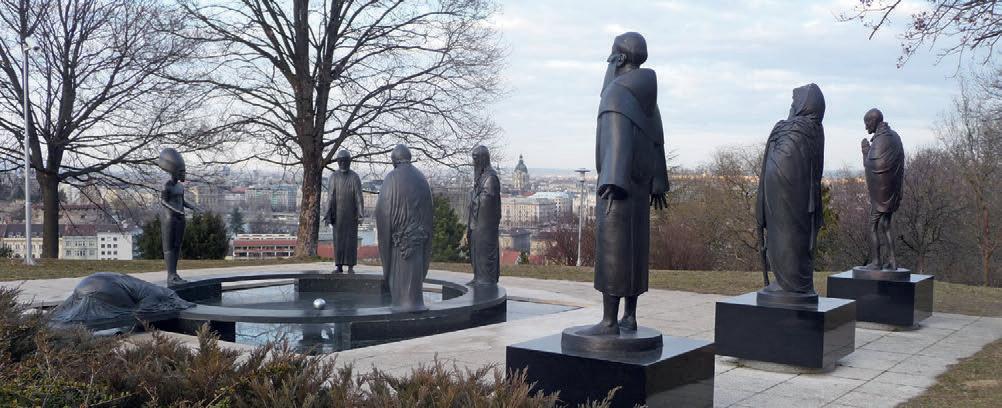
Wagner’s memory cherished
It is due to the life work of Mrs. Chiyo that Nándor Wagner's memory is still alive in Japan, in Hungary and in his town of birth, Oradea (Romania) and that he has admirers in Sweden and around the world. This is thanks to the numerous Wagner Nándor symposia,
the annual Nándor Wagner competitions at the Partium Christian University (in Oradea) and the Motherhood competition in Miskolc, support for artists and artist groups in Japan and Hungary, and, since 2006, to the annual Nagybánya Summer Painter Camp in Baia Mare, Romania. Nándor Wagner’s main work is the ‘Garden Philosophy’. He created three copies. After his death, it was erected in Budapest (2001) and Tokyo (2009) with the third one, intended for New York City, awaiting travel in Mashiko. They carry his message and gift to the peoples of the world with the motto is "For better mutual understanding" – something his wife has acted for throughout her life.
2022/ II DIPLOMACY & TRADE| www.dteurope.com
22 photo by ACADEMIA HUMANA FOUNDATION
GARDEN OF PHILOSOPHY
MASHIKO
















































TAKENAKA EUROPE GmbH HUNGARY BRANCH OFFICE Architecture / Engineering / Construction www.takenaka.eu info@takenaka.hu
ASPIRING TO FINE FORM for a future generation
japanese focus
JAPANESE MOVIES IN YOUR LIVING ROOM
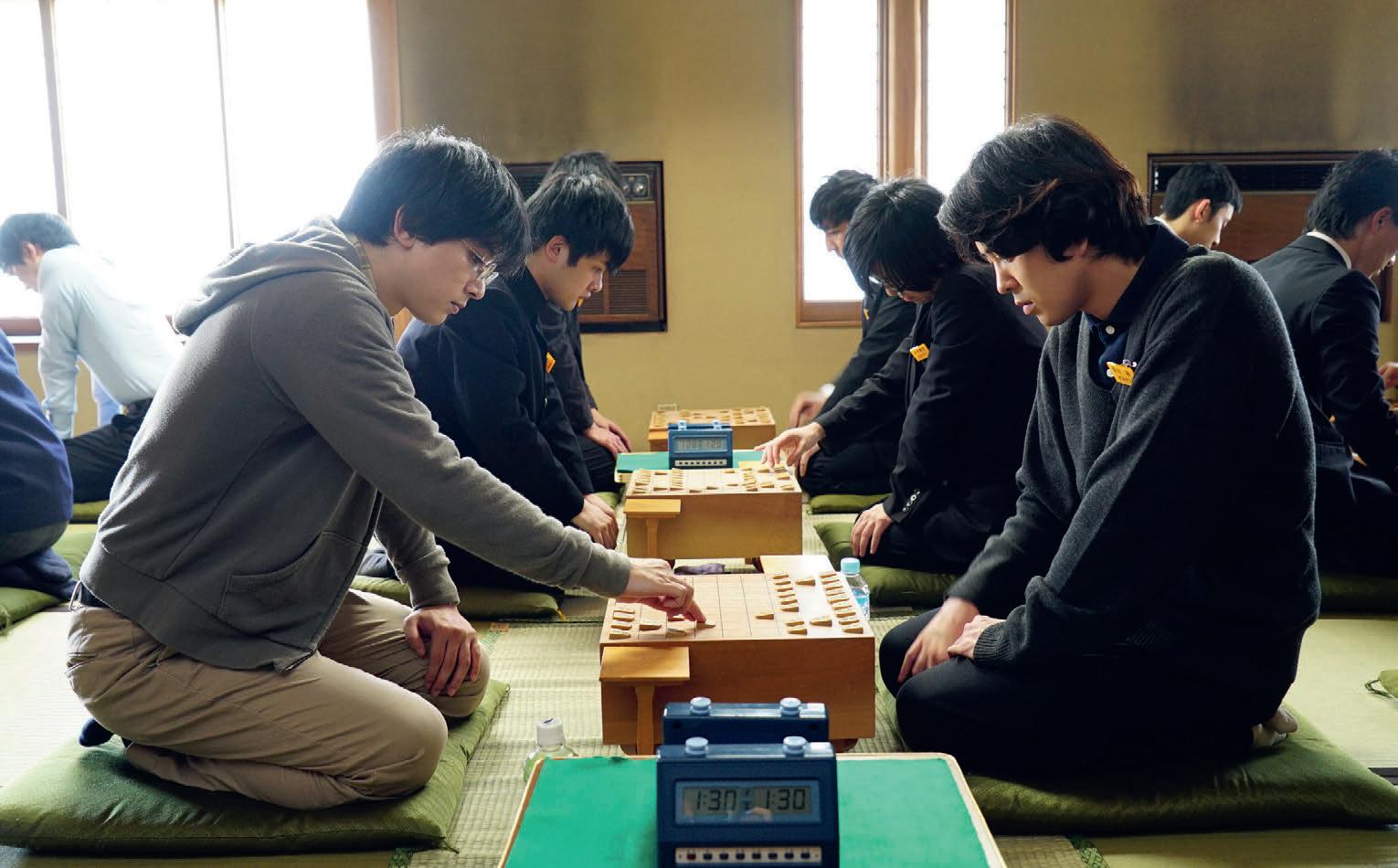
ONLINE JAPAN FILM FESTIVAL FOR HUNGARIAN VIEWERS IN FEBRUARY
After last year's great success, the Japan Foundation Budapest Office will again organize the JFF Online Japanese Film Festival online. From February 14 to 27, 2022, Hungarians can watch 20 Japanese films in their original language, with Hungarian or English subtitles, free of charge, from the comfort of their couch, in the comfort of their home, all over the country. This year's line-up of critically acclaimed awardwinning works and entertainment films include Kurosawa Akira's classic ‘Rashomon’ (‘At the Gates of the Storm‘), or the award-winning contemporary ‘Awake’ and one of Japan's most promising female directors, Nishikawa Miwa's ‘Under the open sky’.
Last year’s first ever Japanese Film Festival Online spanned five continents and 20 countries. A total of 30 Japanese films, from new releases to classics, were broadcast for free, logging over 210,000 views around the world. According to the Japanese Foundation, at a time when movie theaters in many areas were closed due to the pandemic, the festival was able to share Japanese cinema with the world on a scale never before achieved. The variety of films presented, as well as special interviews with directors, made this festival a well received success. For its second year, the festival will expand to 25 countries, focusing on areas where access to Japanese cinema is limited. Nepal, Bangladesh, Argentina, Ecuador, and Peru have been added to the festival’s scope. Viewers located in the countries where the online festival take place are able to watch 20 films presented with subtitles in 15 languages for free (Hungarian and English subtitles are included). In addition to movies, the festival plans to produce a variety of Japanese cinema related content including events and special feature articles published on the Foundation’s website.
The
films to see

As regards the movies on offer, Under the open sky by Nishikawa Miwa debuted in the Toronto International Film Festival's competition program and won numerous international festival awards. In this film adaptation of a work by Naoki Award winning author, Saki Ryuzo, Mikami, a former yakuza, is released from prison after 13 years. He wants to start afresh, but will he be able to find his feet in society? Yakusho Koji, who plays the lead role, is one of the most famous contemporary actors in Japan. Based on the novel of the same title by Takada Kaoru, Mio's cookbook is set in the Edo period. The 200 years between the 17th and 19th centuries were a time of cultural prosperity in Japan. Beyond the exciting story, the meticulously prepared dishes on the film frames capture the essence of this era. In 2015, a shogi game software played chess for the first time against a professional player. Inspired by a true story, Awake is a coming-of-age film about far more than a thrilling game between an artificial intelligence and a human, while festival favorite Aristocrats is a thought-provoking drama about the lives of women in Japan today.
According to Fujii Mami, Director of the Japan Foundation Budapest Office, “from recent and highly popular films, from animation and classics to Japanese culinary and martial arts documentaries, 2022 will again offer a wide range of outstanding films. Even if it's difficult to travel to Japan at the moment, I hope that seeing these films will bring you closer to the island nation and that the interesting stories will stir something in you."
THE JAPAN FOUNDATION
The Japan Foundation was established by the Japanese government with the aim of building and fostering international cultural relations worldwide. Its main mission is to promote the Japanese language and culture and to foster mutual understanding between peoples. Its main areas of activity are Japanese language teaching, artistic and cultural exchanges, Japanese studies and research exchanges. The Budapest Office has been working to bring Japan closer to Hungary for almost 30 years, since its establishment in 1991. It offers a wide range of cultural programs, a rich library and language courses, which are renewed annually.
HOW TO WATCH THE MOVIES
During the time of the festival, each film will be available for two weeks on the homepage, but once the viewer pushes the 'Play' button, a 48-hour time limit will start. In this time period, the films can be rewound and/or rewatched multiple times. For participation, one only needs to register on the website. Before the festival starts, viewers are recommended to check the Help bar's ‘How to watch’ and ‘FAQ’ pages on the website, so they can enjoy the filmscreenings without any technical problem. For this, people can also use the following page to check their viewing environment.
2022/ II DIPLOMACY & TRADE| www.dteurope.com
24 photo by KADOWAKA CORPORATION, “AWAKE” FILM PARTNERS
HOMEPAGE REGISTER FOLLOWING PAGE
RASHOMON
AWAKE
T-DAY AGAIN!
THE OPPORTUNITY IS BACK FOR TOURISM PROFESSIONALS TO MEET FACE TO FACE
On March 3 this year, on the evening of the opening day of the traditional annual travel exhibition in Budapest, the tourism industry will celebrate with an exclusive party. The founder and chief organizer of this T-DAY event, Károly Bosznai, the Head of Communications, Krisztina Henyecz and the Sales and Marketing Director of the Budapest Marriott Hotel, János Parti tell Diplomacy&Trade about the details.
"I clearly remember the first event in 2010 and the excitement that preceded it. All I had in mind was to create an informal event worthy of our profession, where all participants would find their own positive experience,” Károly Bosznai recalls the first T-DAY 12 years ago. Successful organization in the first few years gave the T-DAY brand a solid reputation. It became a meeting point for the tourism industry, where managers and staff of hospitality, hotel and tourism companies could meet face-toface to gather information, establish contacts and discuss business solutions. “T-DAY, now in its 12th year, is a stable event for the industry, despite the fact that life around us has changed dramatically in the last two years,” he adds.
With sustainability in mind
Krisztina Henyecz, Head of Communications notes that travel habits have been constantly changing over the last decade, but with the
COVID-19 pandemic, the market itself has changed completely and T-DAY is responding to this with its renewed format. “The sustainable development that has also started in tourism has changed the way events are organized on the market and the event management process has to adapt to the new challenges. We need to learn to organize more sustainable events with a smaller ecological footprint. Aspects such as cashless sales, volunteering, social sustainability and the involvement of local producers are becoming more important. I am proud that we supported the MyForest initiative for T-DAY and contributed to the planting of 100 new trees.”
Invest in human connections!
The industry and the organizers are committed to the concept of T-DAY, united in their belief that face-to-face meetings have a key role to play in tourism, as virtual contact cannot replace direct human contact. “The digital world has given us many technological tools to make
a real difference to tourism, but most business success often depends on the quality of close human relationships,” Károly Bosznai explains. “There are clear signs of demand and recovery following the closures due to the coronavirus, but our industry still faces ongoing challenges. I believe it is important to get to know each other's areas of expertise and to provide opportunities to build relationships and strengthen cooperation. This was our guiding principle when we organized our first event in 2010, and our mission has not changed since then: to ensure sustainable growth and improve our positions is in the common interest of all of us," he says.
At the Marriott once again
After the highly successful end-of-year event in December, the T-DAY will again be hosted at the Budapest Marriott Hotel. The organizers say they are grateful for the hotel's partnership, as the prestigious setting certainly adds value to T-DAY's life.

The Director of Sales and Marketing at Budapest Marriott Hotel and Millennium Court Marriott Executive Apartments, János Parti highlights that “hosting T-DAY is a very good opportunity for the hotel to show that it cares a lot about the professional community and its openness to colleagues. Basically, Marriott has a corporate culture that puts employees at the heart of its operations. We thought this was an absolutely fitting event for our image, not least because it is also a great networking opportunity as it brings together not just hotel industry professionals, but colleagues from all corners of the tourism industry.”
Uncertainties with promising signs
The Sales and Marketing Director points out that the Budapest Marriott Hotel has not closed for a single day during the whole pandemic period, it has been open all the time. He is of the view that as tourism is now emerging from the crisis caused by the epidemic, the outlook for Budapest seems to be mixed but positive overall. “Tourism is not only made up of individual travelers coming to a city for leisure or cultural purposes, but there are other motivations and types. There are types of travelers where we are absolutely feeling the recovery, and there are others that are still faltering. One example is that on the individual leisure tourist side, we are seeing a very slow but steady and sure increase in our pre-bookings from the European markets, but on the group side, which is group traffic from overseas, for example, mainly related to cruise tours, there are still uncertainties. We are talking about a very high volume, by the way, of cruises that depart from or arrive in Budapest. Typically, these are groups that spend a few nights in Budapest. The sales in the case of these cruises are much less uncertain than they were, say, a year ago. Another segment that we absolutely feel will only come back in the second half of the year is international business events, conferences and meetings. Practically from June onwards, and especially after September, you can definitely expect them to return.”
He adds that the hotel sector was delighted to hear the recent news that the Hungarian capital will be hosting this year’s World Aquatics Championships, which “will be of huge importance for all of us in this profession.”
The human factor
It was stated in Diplomacy&Trade prior to the previous Tourism Day that "the main mission of T-DAY is to provide a networking opportunity and meeting point for tourism operators in a stylish environment, in the form of an informal evening reception."
János Parti confirms that this is going to be the situation this time as well.
“There have been very few opportunities to meet colleagues in person recently. And such an evening is always very good because it is very focused, you can meet a lot of people in a short time. That's why I think that a lot of people are looking forward to it, to be together again and to meet a lot of old acquaintances again. This is still a peopleto-people business, so despite the fact that a lot of sales are done through online systems and electronic platforms, personal relationships and trust still play a huge role here, and this value can only be created and nurtured by people meeting each other.”
tourism www.dteurope.com |DIPLOMACY & TRADE 2022/ II 25 photo by DÁVID HARANGOZÓ
TOKAJ GUIDE VICTORY AT THE GOURMAND INTERNATIONAL AWARDS
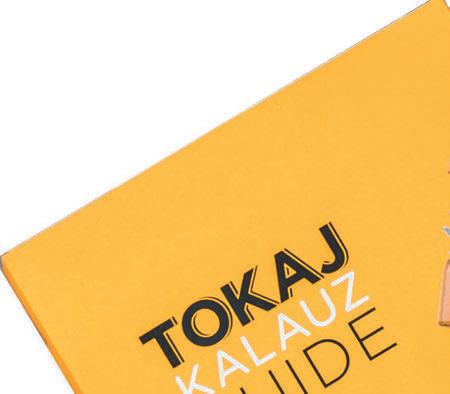
GUIDEBOOK PROVIDES ASSISTANCE FOR READERS IN THEIR JOURNEY TO THE TOKAJ REGION
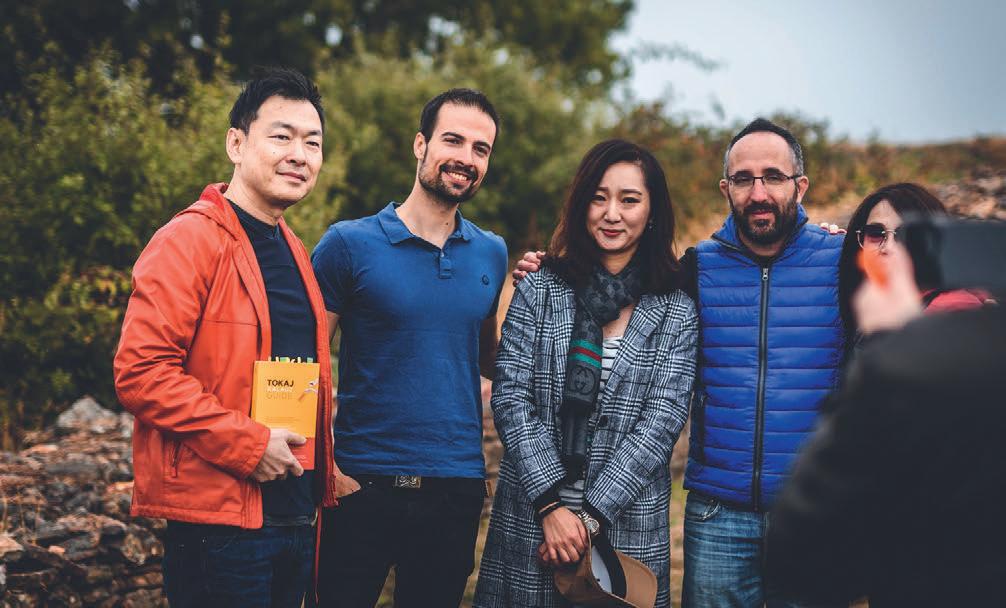
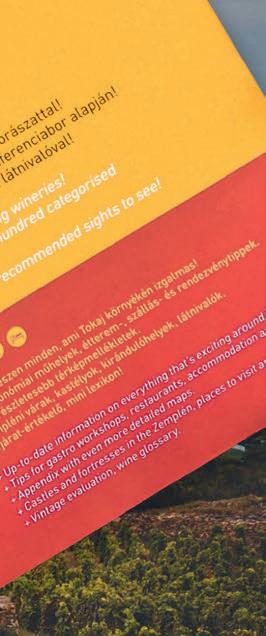
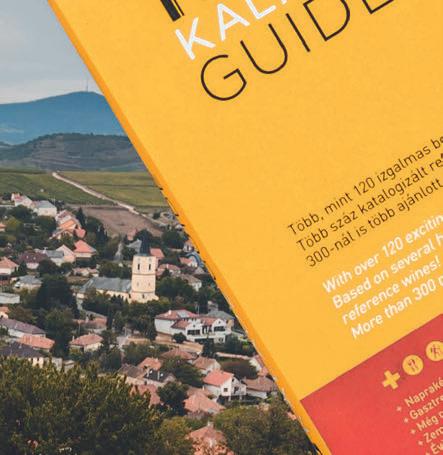




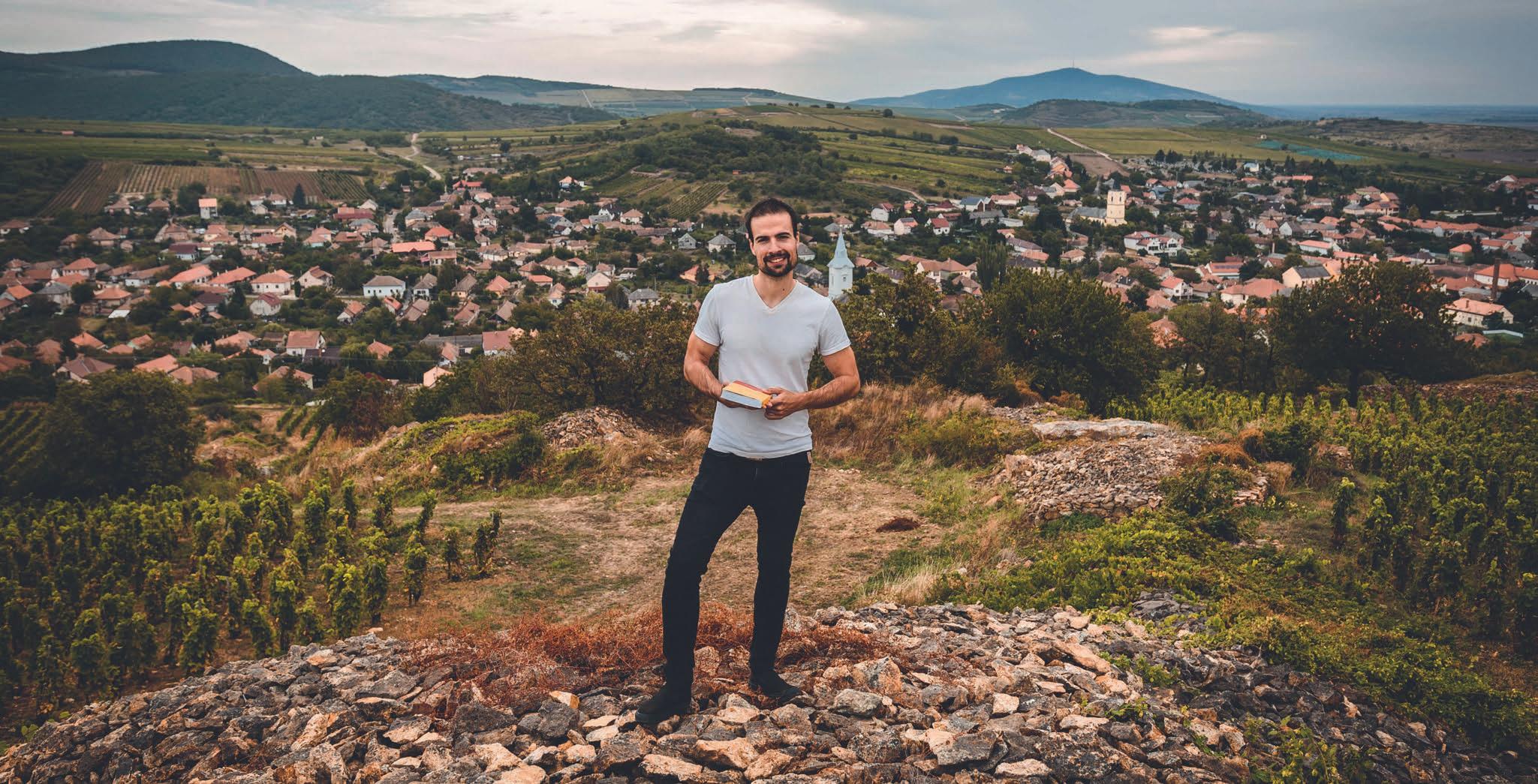
The awards for the world’s largest competition for food and drink culture publications, the Gourmand International Awards were presented in Paris at the recent World Cookbook Fair with a resounding Hungarian success. Gergely Ripka’s bilingual Tokaj Guide that earlier made it to the Top 4 in the European Wine Book category in February 2021 and thus was given the prestigious title ‘Best European Wine Book’ with the diploma being presented World Cookbook Fair.
The publicity accompanying the success of the book will also put the Tokaj wine region in the limelight, the Hungarian book’s publisher says in a statement. The location for the awards ceremony was the impressive building of Les Cordeliers and the shortlisted publications were selected from 983 contestants coming from 170 countries representing practically all corners of the world.
Wide international field

In the ‘Drink Culture’ section, 165 books were entered in 26 categories and those finishing in the Top 4 were awarded the ‘Best in the World’ certificate. The ceremony’s venue, Les Cordeliers, is located in the 6th arrondissement (that is, district) of Paris, right next to Sorbonne University. This historical building was originally a convent for monks in the Middle Ages but then it was turned into the French Revolution Club led by Danton. This is where the awards were presented to the winners of each category. Apart from the Olympic Games, there is perhaps no other competition with so many contestants representing so many nations, a fact which makes the victory of Tokaj Guide even more precious.
The Gourmand International Awards was established in 1995 and celebrated its 25th anniversary last year in Paris. Since the beginnings it has evaluated over 45,000 food and drink publications from 225 countries.
Cherishing the riches of Tokaj

“I never thought and never expected that one day I would be applauded for my book. Tonight, in Paris I will celebrate with a glass of Champagne, but as soon as I get home, I’m going to open a bottle of Tokaj Aszú as these two wines are the most fitting to celebrate special occasions! I’m feeling grateful for those who gave me reason to celebrate at this beautiful, historical place,” Gergely Ripka said in his speech. “Tokaj had important messages for all ages and for all people and that is no different today. Tokaj is there for everyone to explore and cherish its riches and my responsibility is to provide assistance in this journey to as many people around the world as possible.”
Unparalleled insight
Tokaj Guide is a self-published biennial book that is available in all major bookstores in Hungary. The bilingual (Hungarian and English) publication covers 150 wineries in Tokaj-Hegyalja and gives an unparalleled insight into the sights and activities offered by the region: restaurants, accommodation, hiking routes, historical locations, the most noteworthy events and festivals. There is a lot to be discovered in this protected cultural landscape listed by UNESCO as a World Heritage Site.

2022/ I I DIPLOMACY & TRADE| www.dteurope.com wine 26 photo by TOKAJ GUIDE
CURE TOUR EURO 22
OCTOBER 26, PAPP LÁSZLÓ BUDAPEST SPORTS ARENA, BUDAPEST

The Cure will be playing again in Europe in the fall of this year, it will be their first major tour of the continent since 2016. One of these highly expected shows will be in Hungary. Robert Smith's band was formed in 1976, played its first show in 1978.





The Cure first music placed the band as part of the post-punk and new wave movements, but during the early 1980s, the band's increasingly dark and tormented music was a staple of the emerging gothic rock genre. In the middle of the 1980s, Smith began to place a pop sensibility into the band's music and their popularity increased as the decade wore on, with songs like ‘Just Like Heaven’, ‘Lovesong’, ‘Friday I'm in Love’ and ‘Lullaby’.


“The Cure has released 13 studio albums, several concert films, a few live albums, some soundtrack songs and more than 40 singles. And a couple of box sets. A couple of books. A Greatest Hits thing, a handful of covers and various other stuff,” the organizers say. The band has performed around 1,500 shows to date.
The 2019 Rock’n’Roll Hall of Famer has had 13 members in 42 years. Concerts in 2021 featured five of them: Robert Smith (voice & guitars), Simon Gallup (bass), Jason Cooper (drums), Roger O'Donnell (keyboards) and Reeves Gabrels (guitars). livenation.hu
BARTÓK SPRING INTERNATIONAL ARTS WEEKS

APRIL 01-17, PALACE OF ARTS AND OTHER VENUES IN BUDAPEST

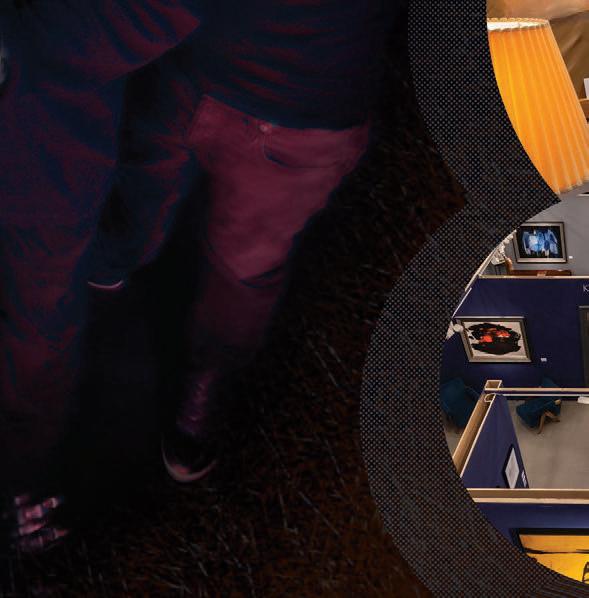
The second Bartók Spring International Arts Weeks offers weeks of entertainment with the best Hungarian and international artists, world-famous companies, exceptional soloists, new productions and unconventional performances. Fascinating new productions are now added to the program, with the return to Hungary of the globetrotting, hugely successful contemporary circus company, Circa, who bring a breathtaking show that is based on Stravinsky’s iconic ‘The Rite of Spring’. The events already announced will have made the Bartók Spring a redletter holiday in the calendars of many jazz fans, but the festival has another surprise in store: one of the most distinctive groups on the British jazz scene, the WorldService Project, which has been active for more than a decade, will be coming to Budapest.
While the Bartók Spring seeks, above all, to represent the creativity, outlook and spirit of its eponym in the most diverse genres, Béla Bartók’s own works should not be missing from the program of the festival. The melodies recorded by the world-famous Hungarian composer are still influential in folk and classical music, and continue providing inspiration for the composers and performers of jazz and world music. In addition to the music of Hungary, Bartók also had a keen interest in the melodic riches of the surrounding peoples and of more distant lands: his Arabic collection from North Africa is an exceptionally rich material. This is the inspiration for the special total art production entitled Pure Source, which will feature, among others, Mesi Guessous, the Ballet Company of Győr, the Hungarian State Folk Ensemble and the Kodály Philharmonic Debrecen, and will explore some characteristic pieces of Bartók’s œuvre through the connection between Arabic and Hungarian music, with a special focus on the relationship between music and dance. Bartók 1914, an evening at the House of Hungarian Music, celebrates the composer’s last great collection expedition to Transylvania: the concert will be hosted by the Magos Band, who are dedicated to the folk music of the region, and their guests will be data providers from the villages Bartók visited, musicians from Magyarpéterlak, who are well-versed in the music of the Székely villages along the Nyárád, as well as Ágnes Langer and Balázs Fülei. bartoktavasz.hu
ART AND ANTIQUE BUDAPEST MARCH 03-06, BÁLNA, BUDAPEST
More than 30 contemporary and classic galleries, auction houses and art dealers will be exhibiting at the Art and Antique 2022, the fourth edition of the fair. The exhibition will feature works by Sándor Bortnyik and István Nádler, among others, at Erdész Gallery, and a statue of Boldi at Bodó Gallery. Kalman Maklary Fine Arts will also be presenting a painting by Simon Hanati, Nagyházy Contemporary will be showing works by several young artists, including Gergő Ámmer, and Ani Molnár Gallery will be showing works by Tamás Konok and István Haász. Erika Deák Gallery's stand will feature János Fajó, Nudelman Numismatica's will showcase Dóra Maurer and Dezső Korniss, Einspach Fine Art and Photography will exhibit emblematic works by György Z. Gács, while Endre Bálint works will be on sale at Vintage Gallery while the Judit Virág Gallery will have László MoholyNagy's Composition and József Rippl-Rónai's Anella. Major dealers will also be offering their special furniture at the fair: at Fabrika Studio, for example, you can find rare pieces of furniture for your home that have been restored using only natural materials, while several exhibitors will also be displaying valuable jewelry for collectors alongside their furniture. From furniture and paintings to jewelry, visitors can find almost every type of art object at the fair, while art historian Péter Antalffy will give guided tours in Hungarian and English on several occasions. art-and-antique.hu




TOM ODELL – THE MONSTERS TOUR 2022

SEPTEMBER 28, BARBA NEGRA MUSIC CLUB, BUDAPEST

Tom Odell – Ivor Novello-winning songwriting sensation, precocious master of the ivories – is at the very top of his game. It’s not as if, with multiple awards and more than two million sales under his belt, the Chichesterborn prodigy has anything to prove. His debut album, 2013’s ‘Long Way Down’, topped the charts in the UK, the second long-player, ‘Wrong Crowd’, pretty much replicated its predecessor’s success. Still only 27, he quickly strikes back with his third, ‘Jubilee Road’ – a career-defining record, which saw the multi-talented young artist take full control of his music: writing, singing, producing and vamping up his vibrant piano style. His fourth studio album, ’Monsters ‘, was released in 2021 and debuted at number four on the UK album chart, becoming Odell's fourth Top 10s. One of the UK’s leading young artists was discovered by Lily Allen of Columbia Records, who was impressed by his stage presence. Tom Odell is well known for his amazing live shows when he captures his audience from start to finish, and his gigs offer a whole new dimension to his popular, soulful, emotional songs. livenation.hu



27 photo by LIVE NATION, PEDRO GREIG, GRADVOLT ENDRE/ENDIZAJN PICTURES www.dteurope.com |DIPLOMACY & TRADE 2022/ II
TASTE IT TO UNDERSTAND IT
DON’T DRINK AND DRIVE
